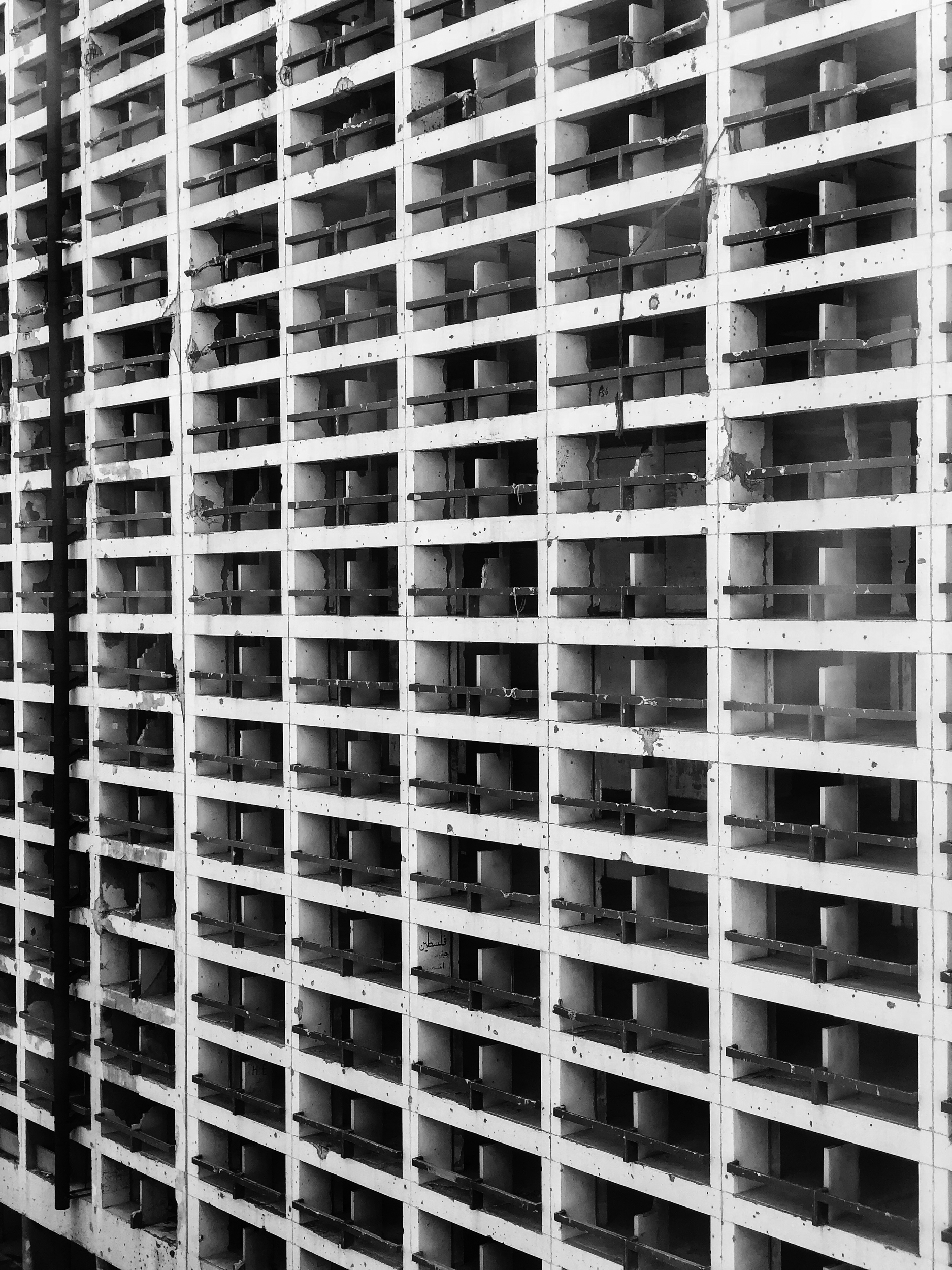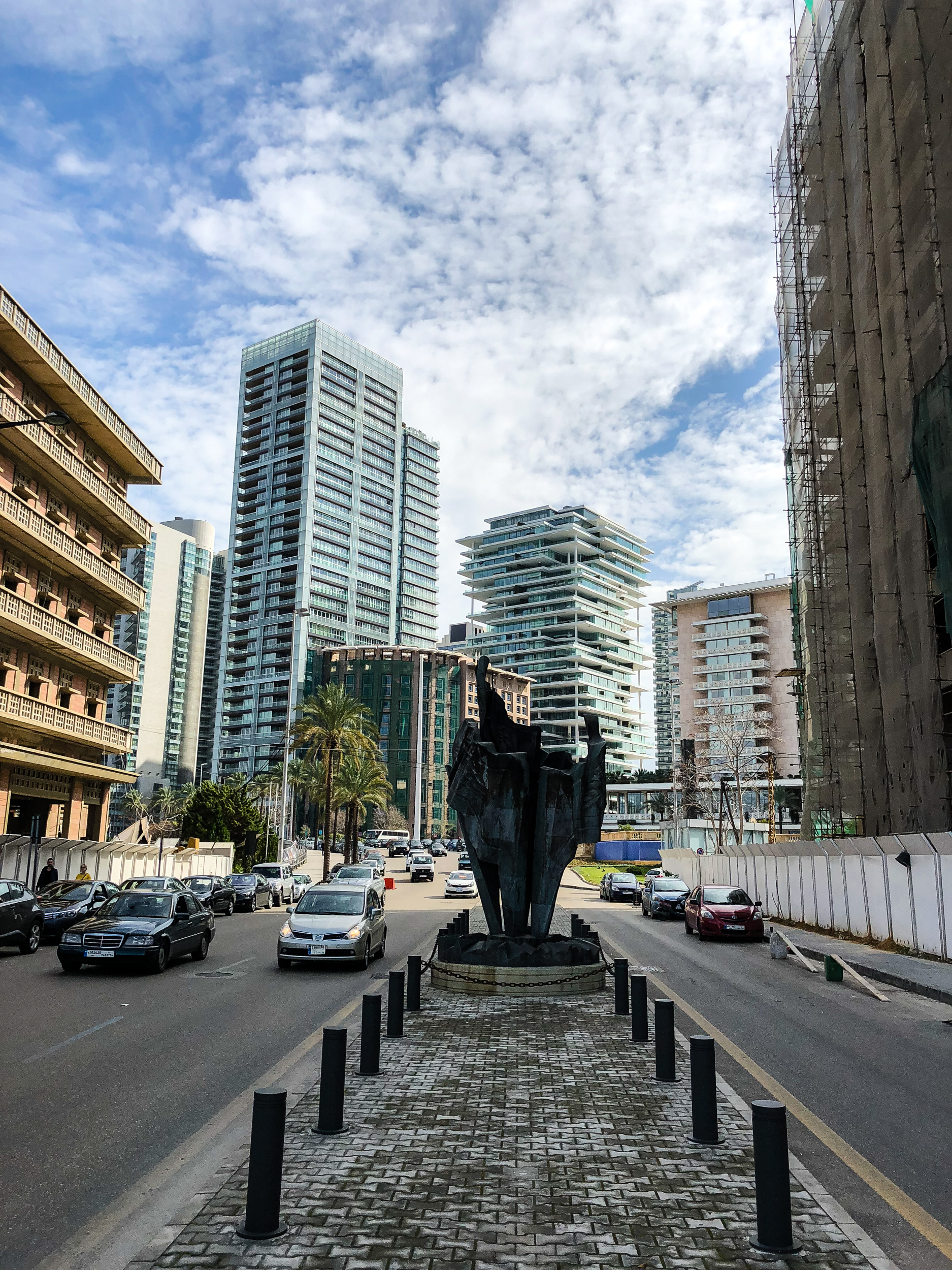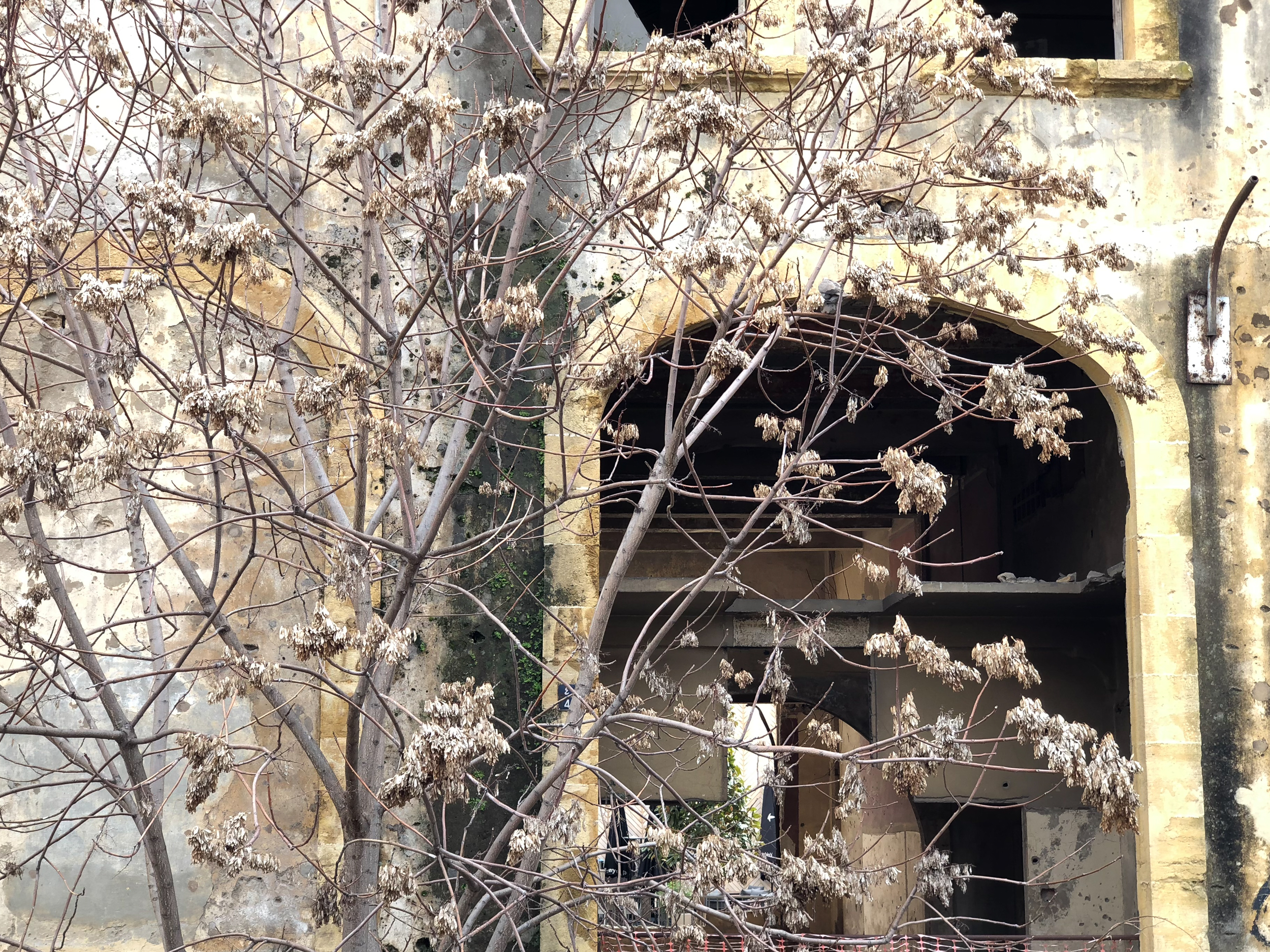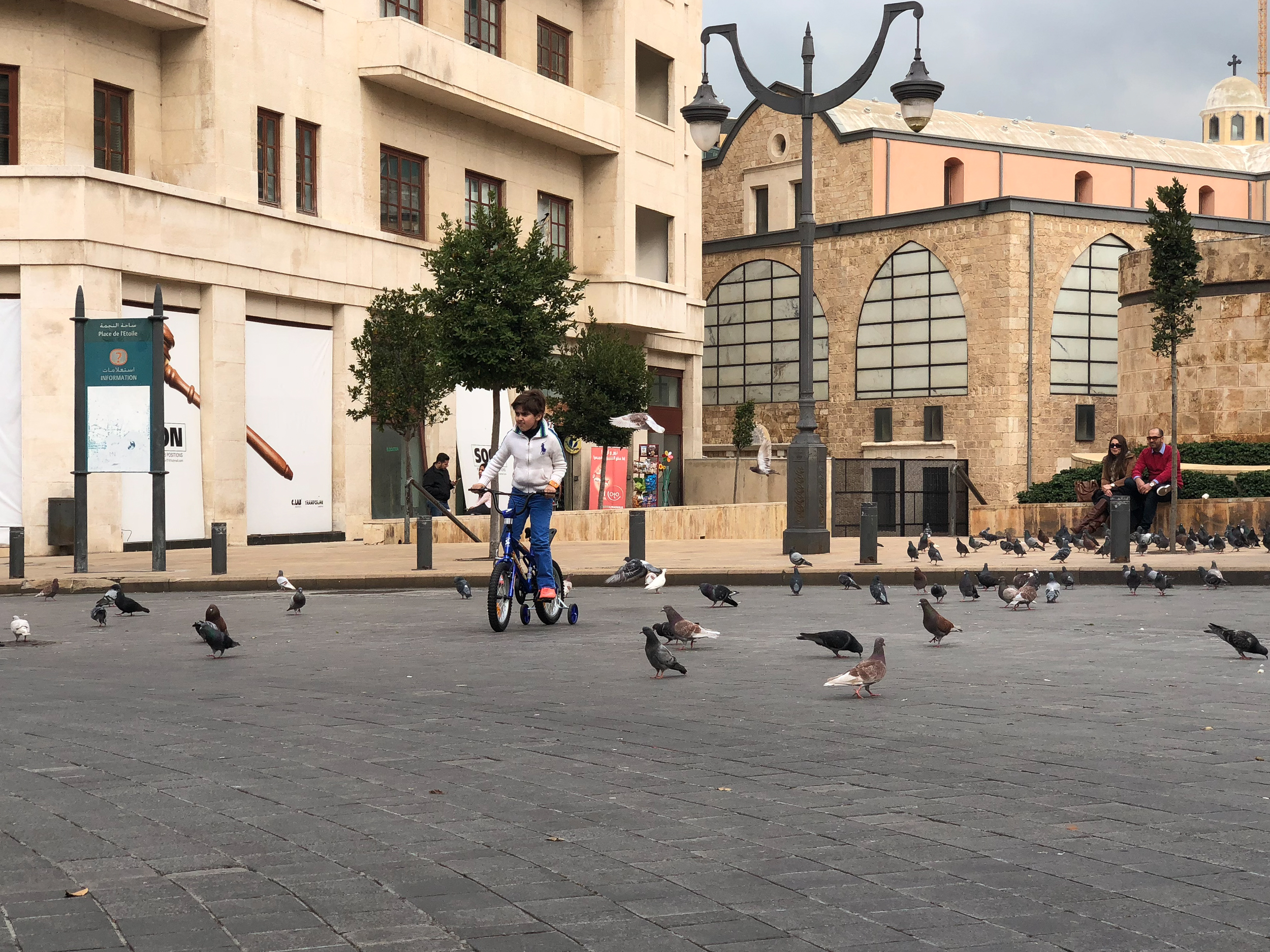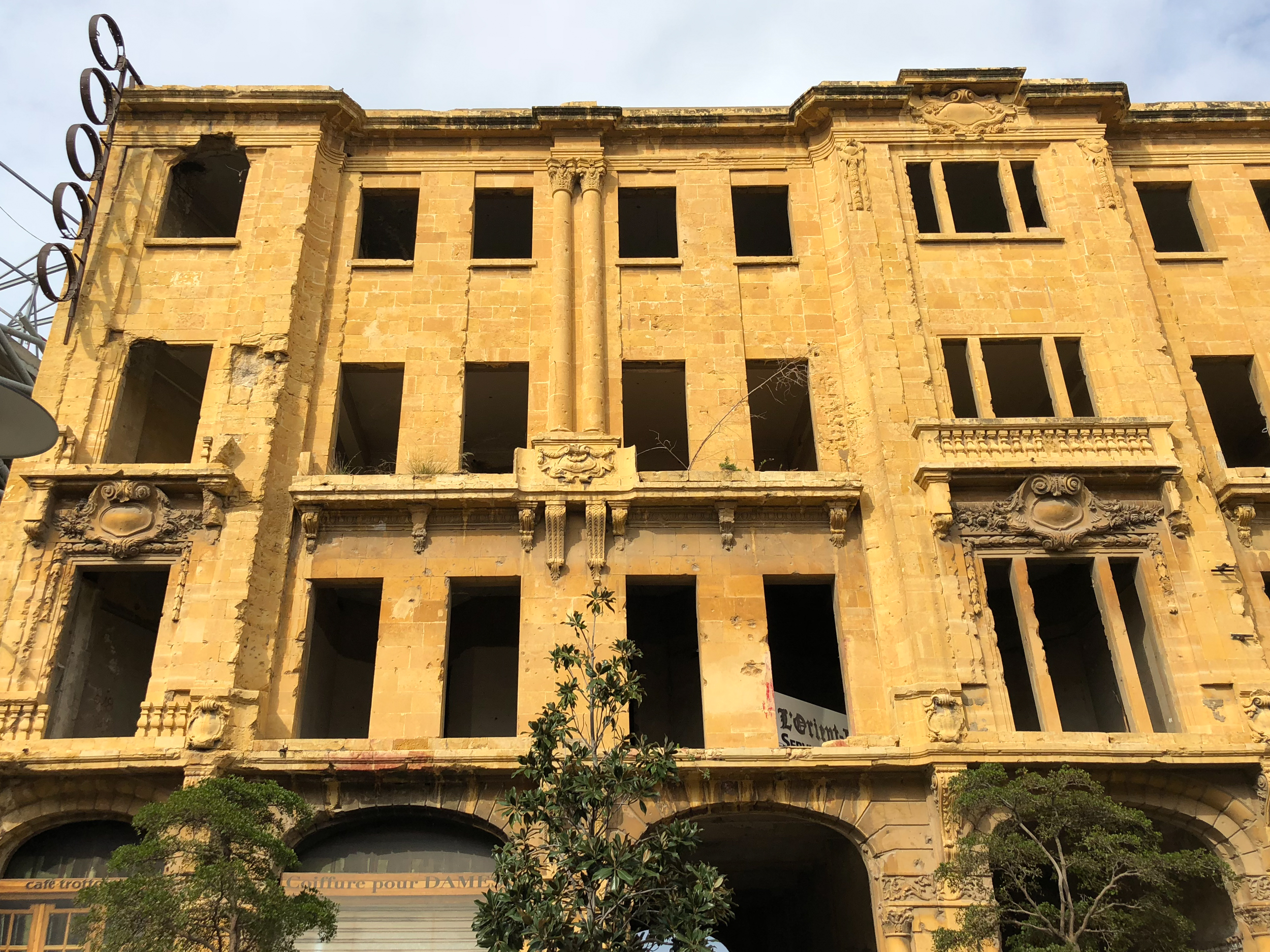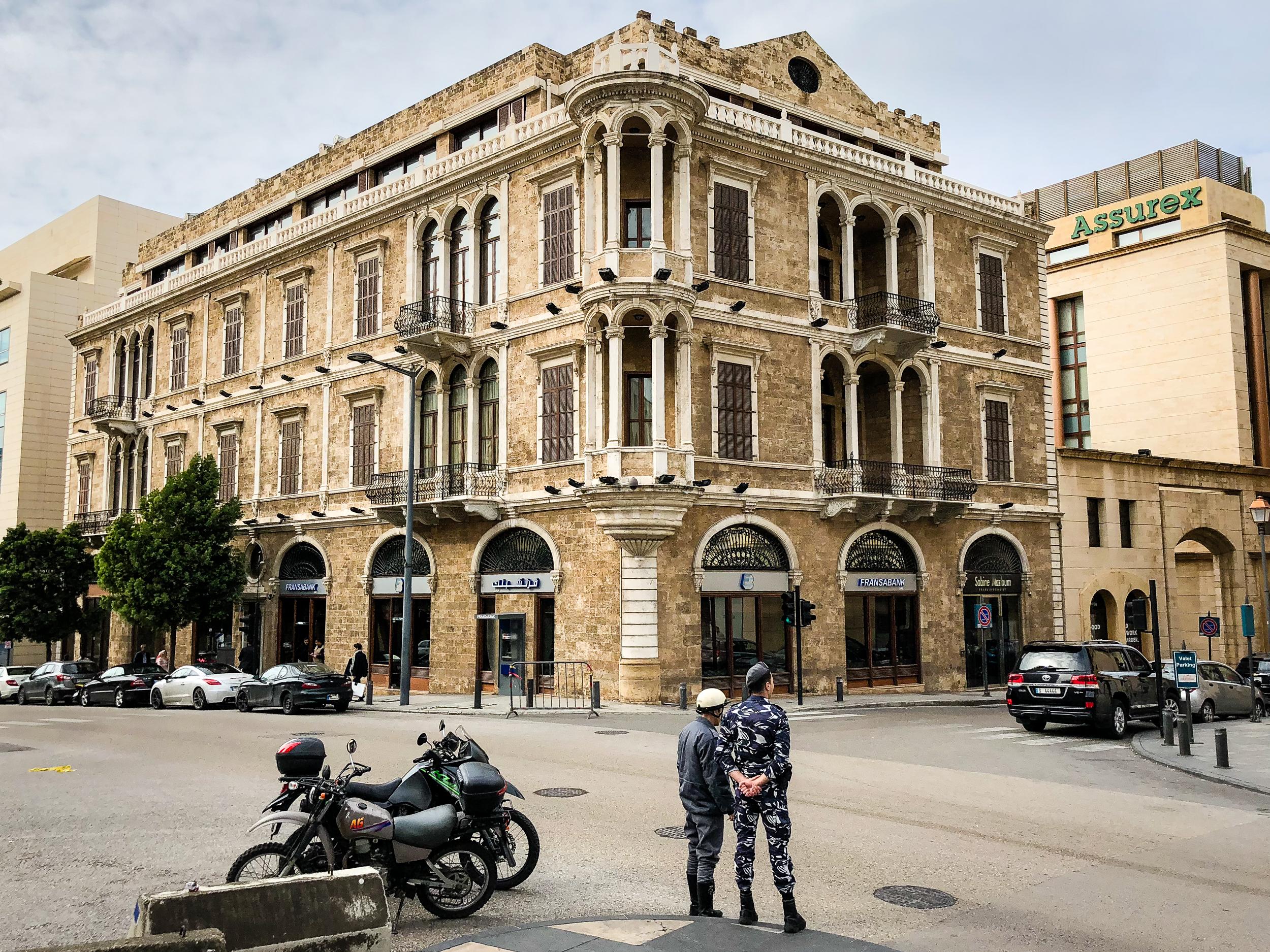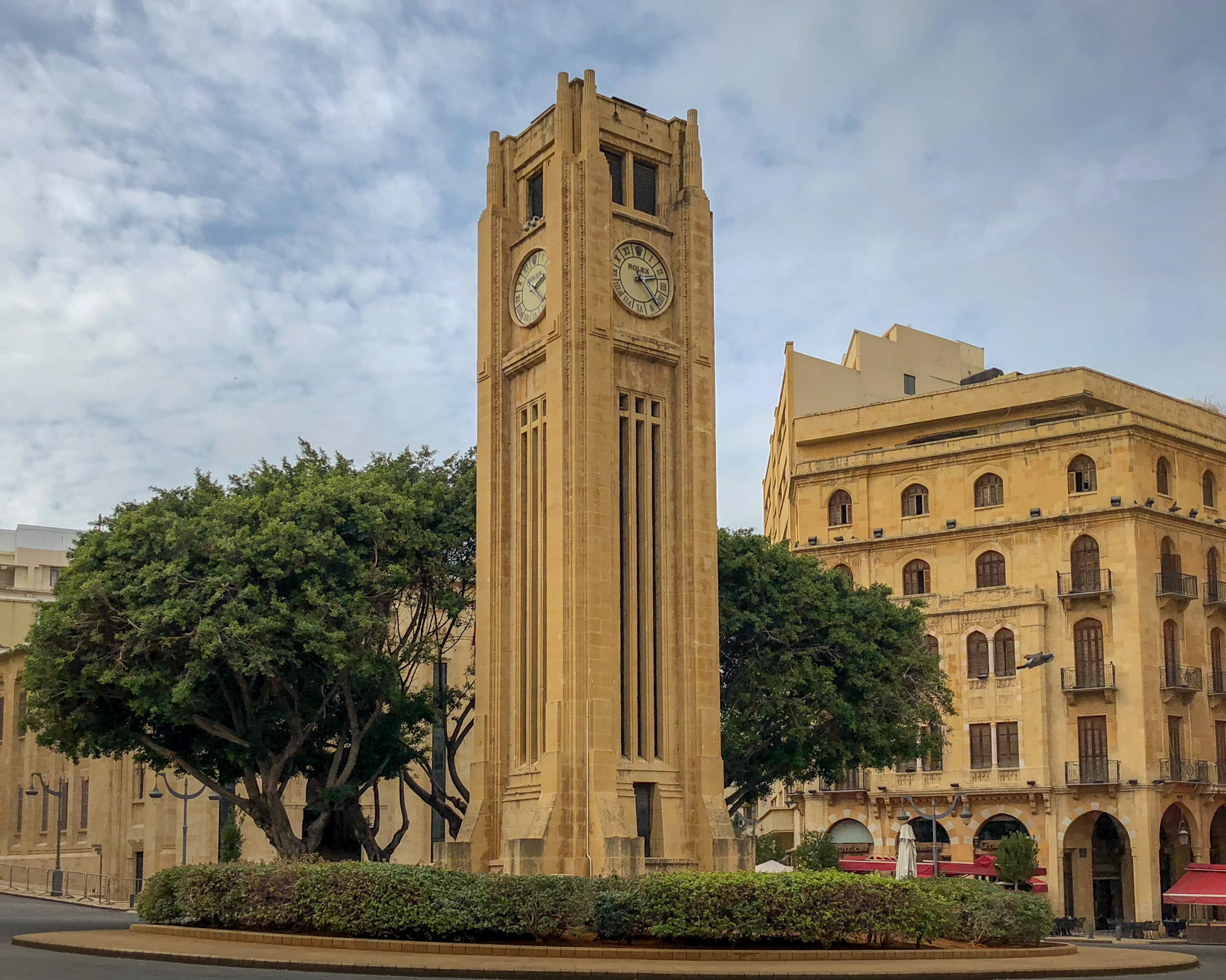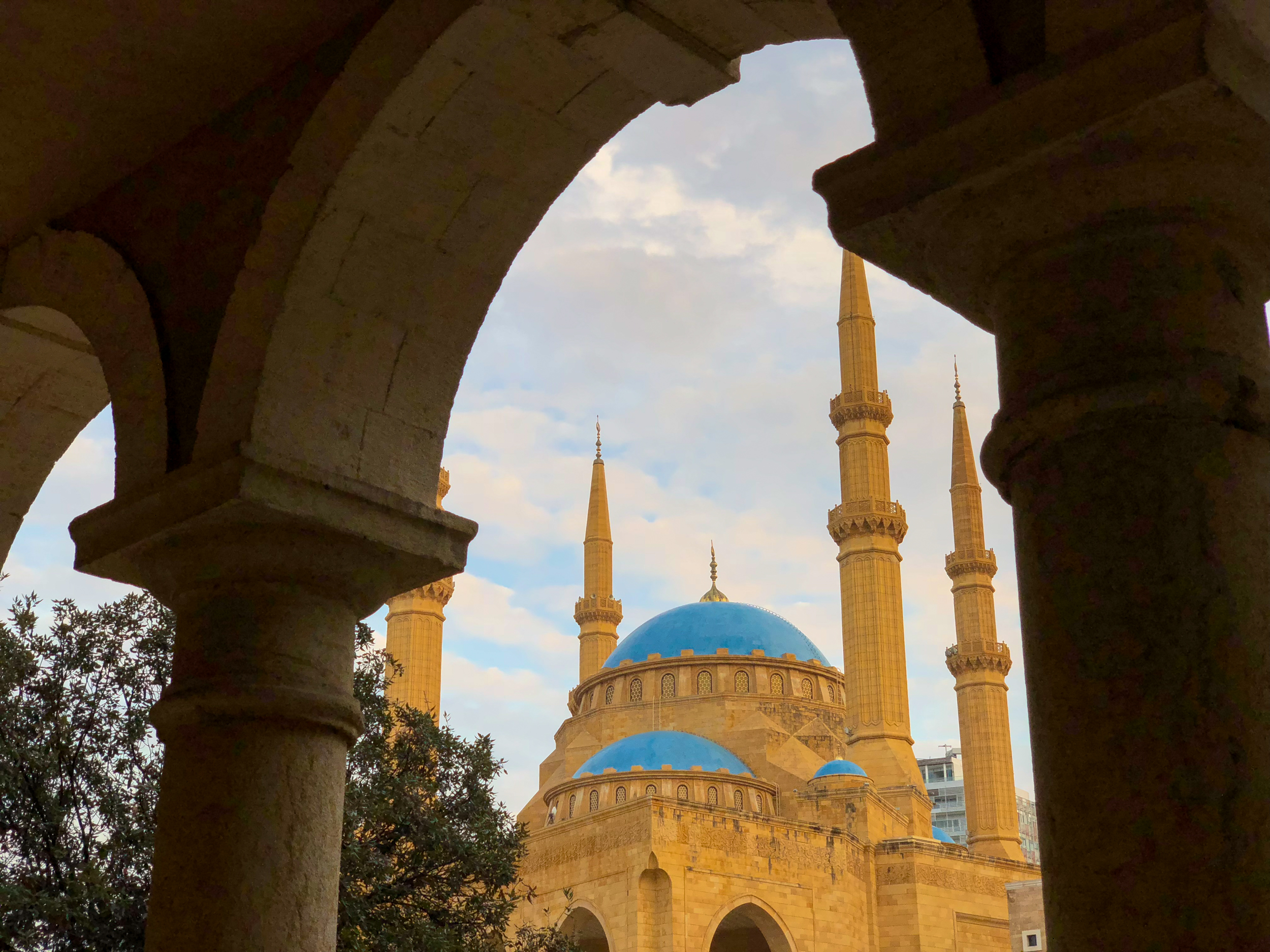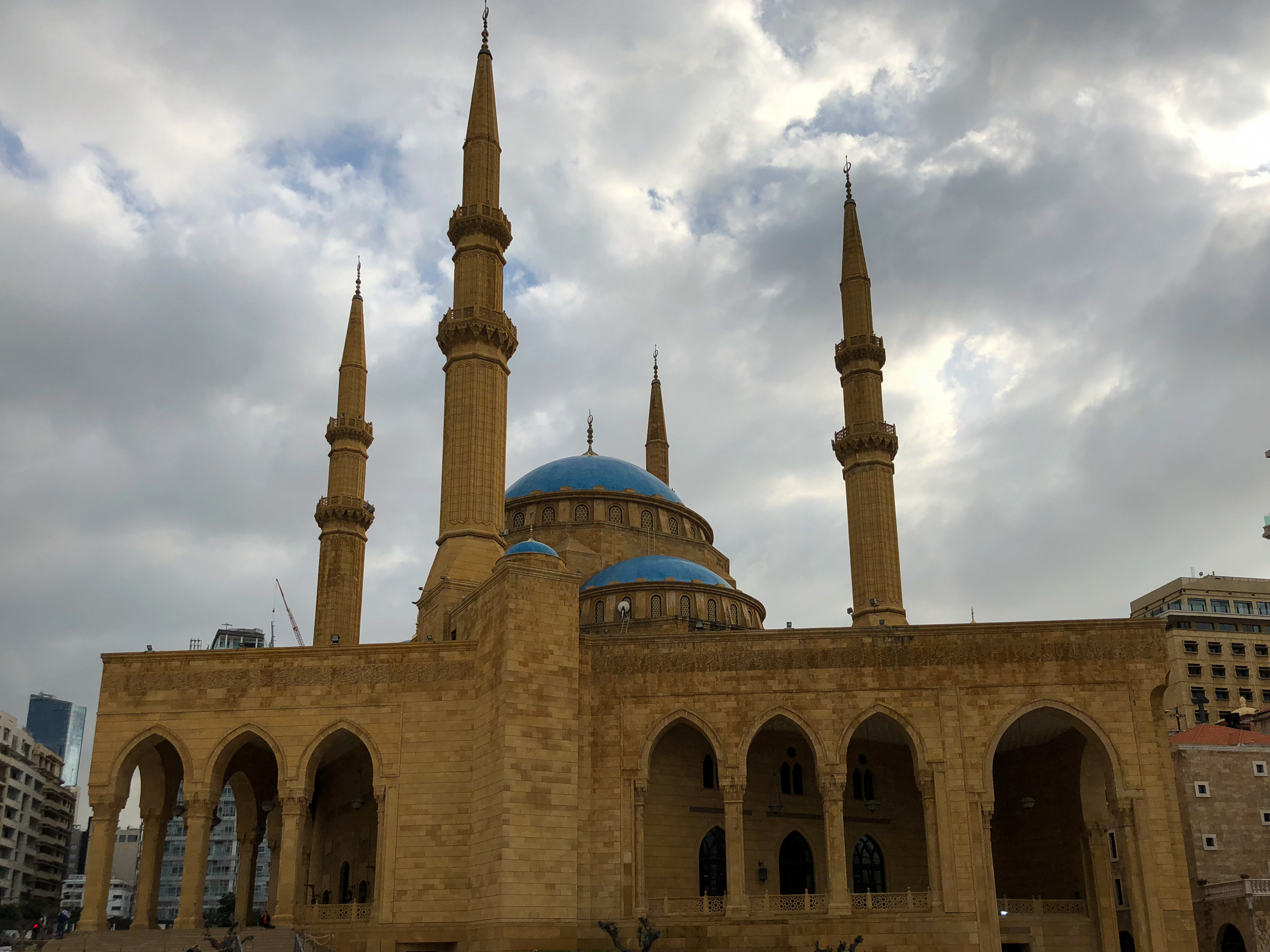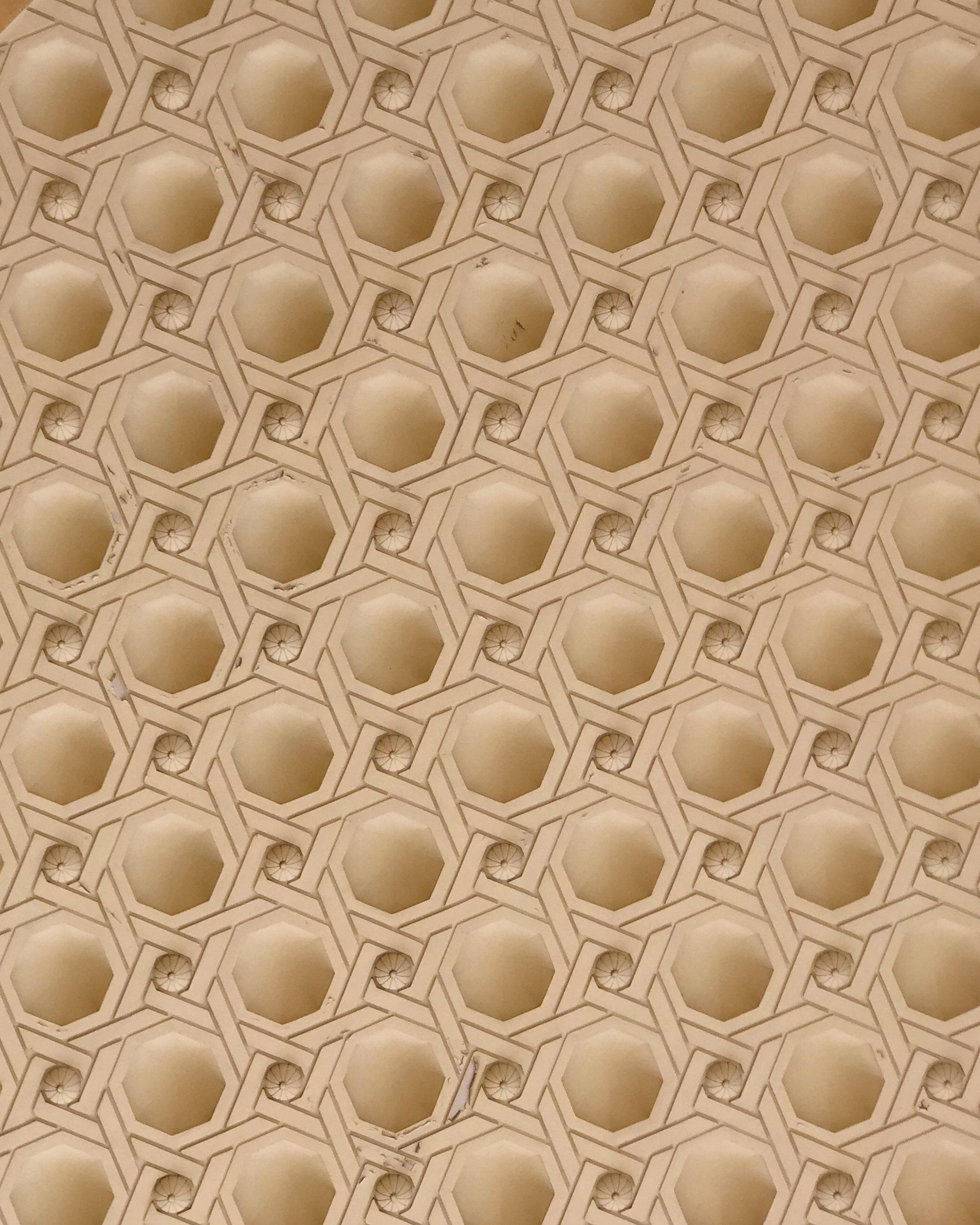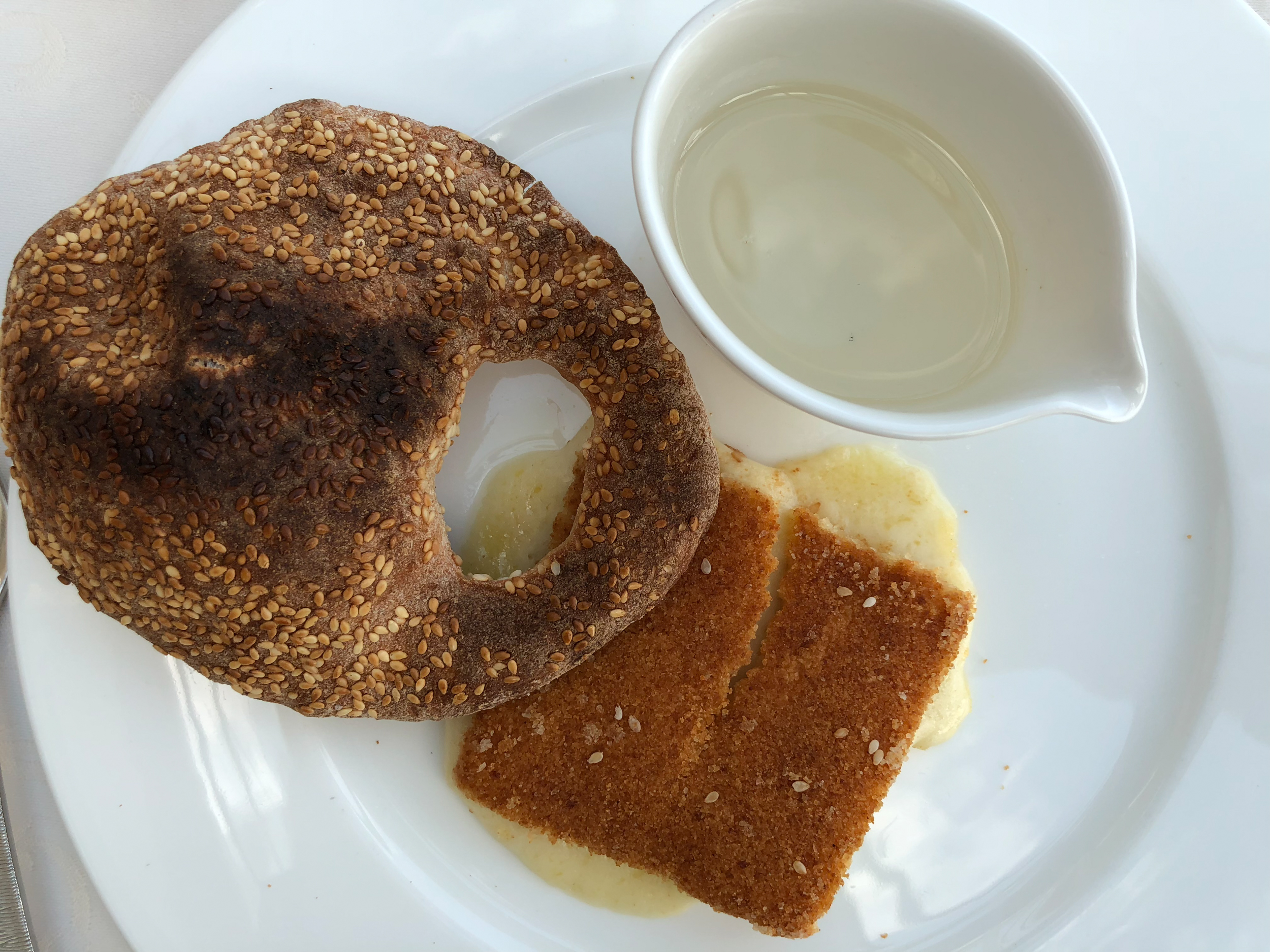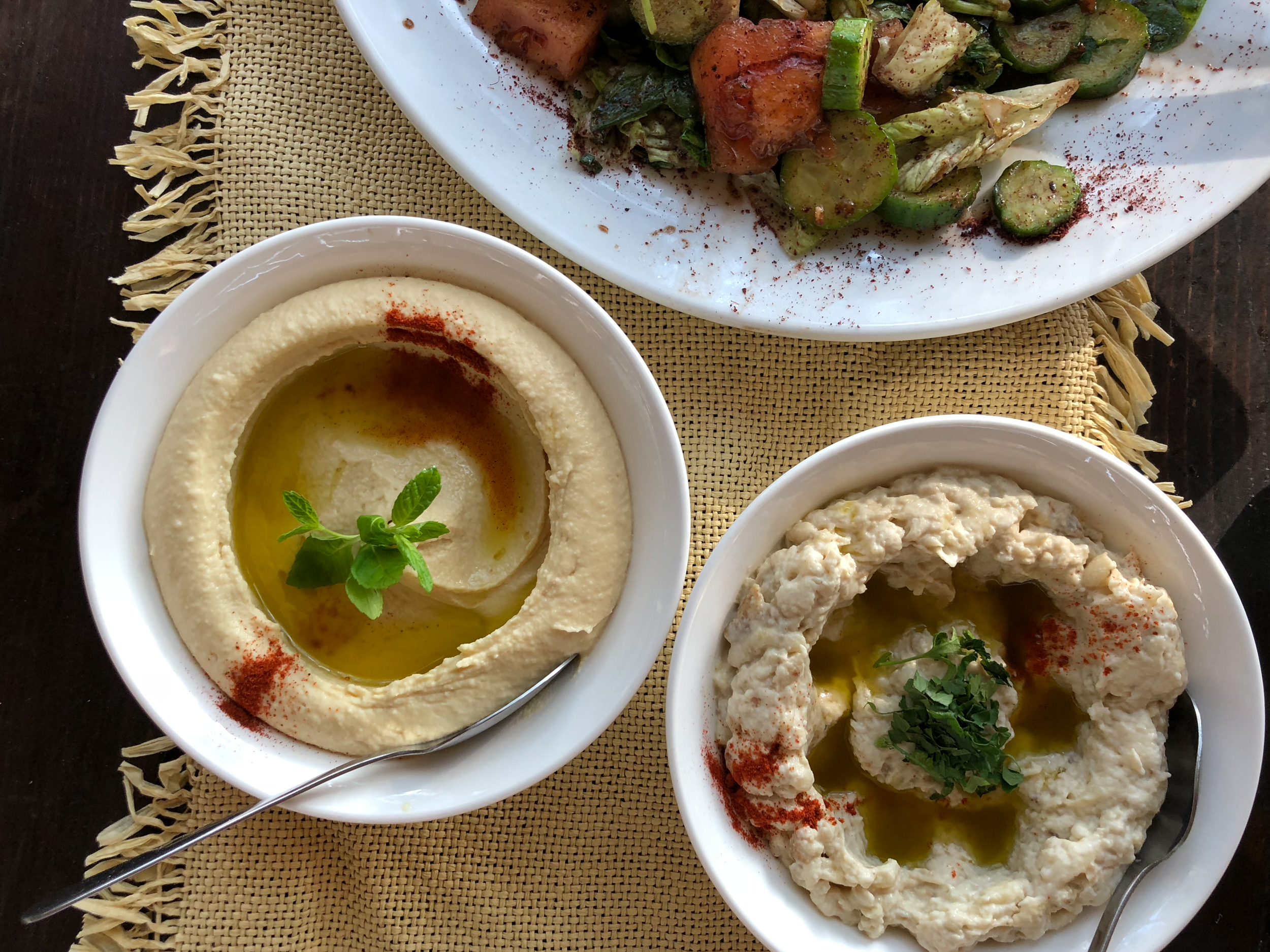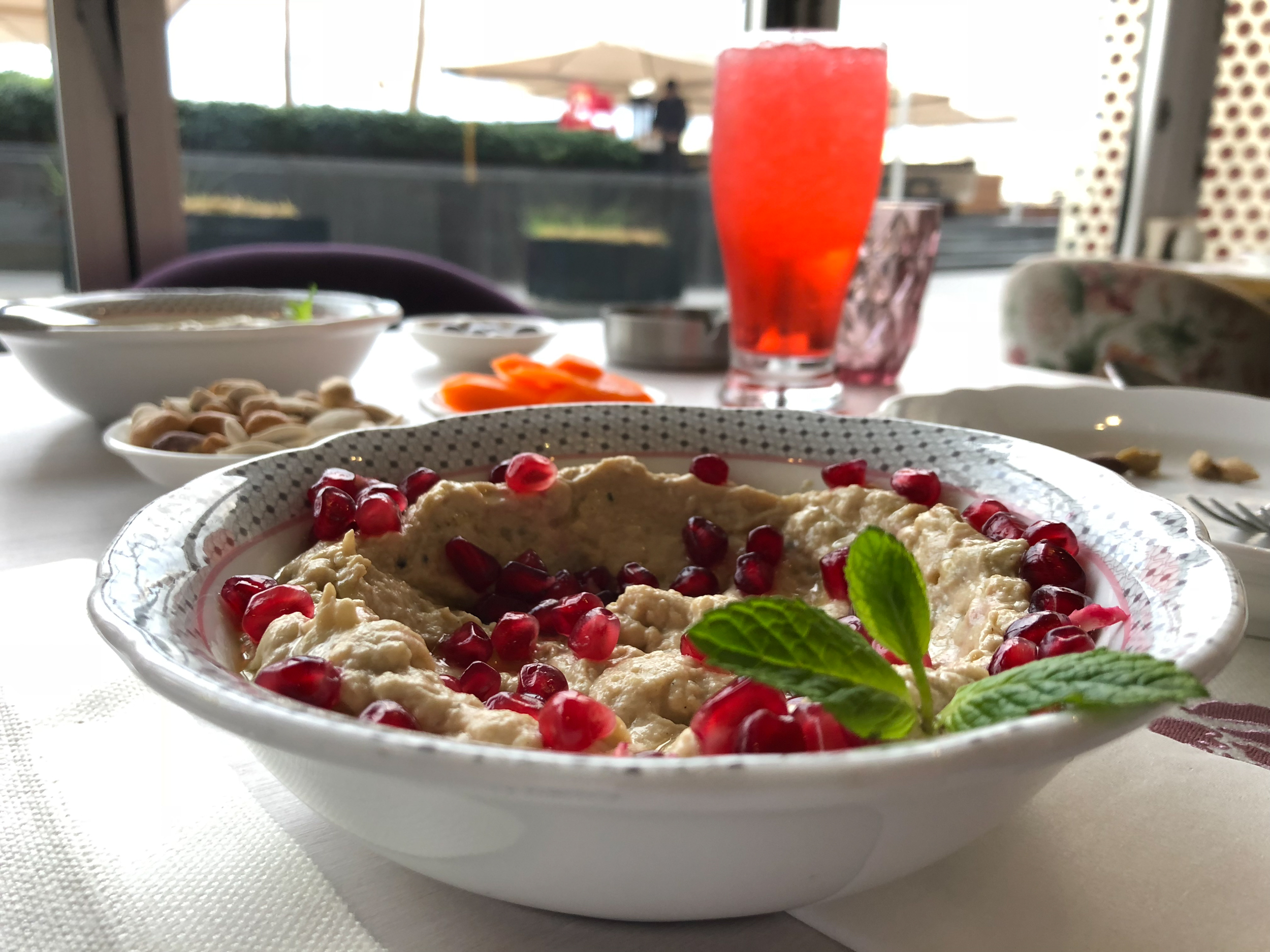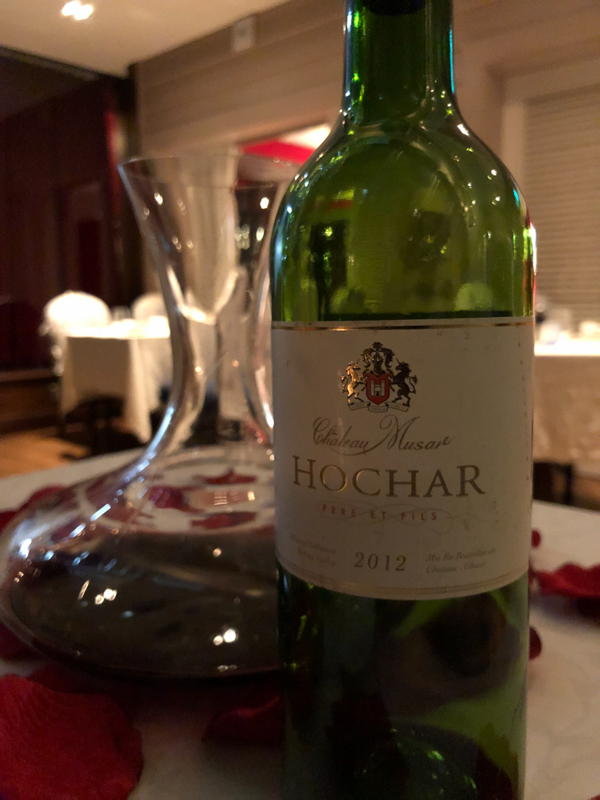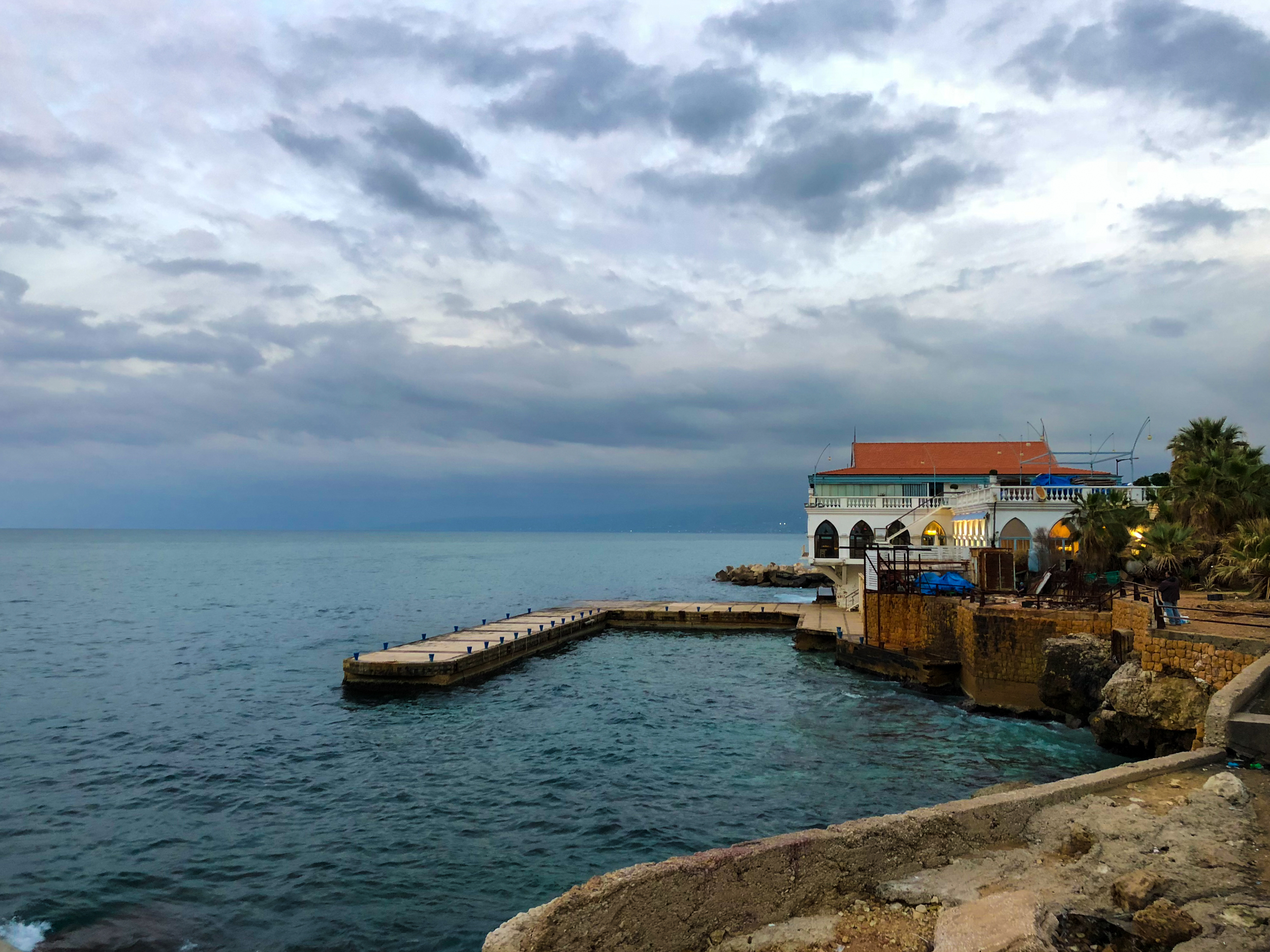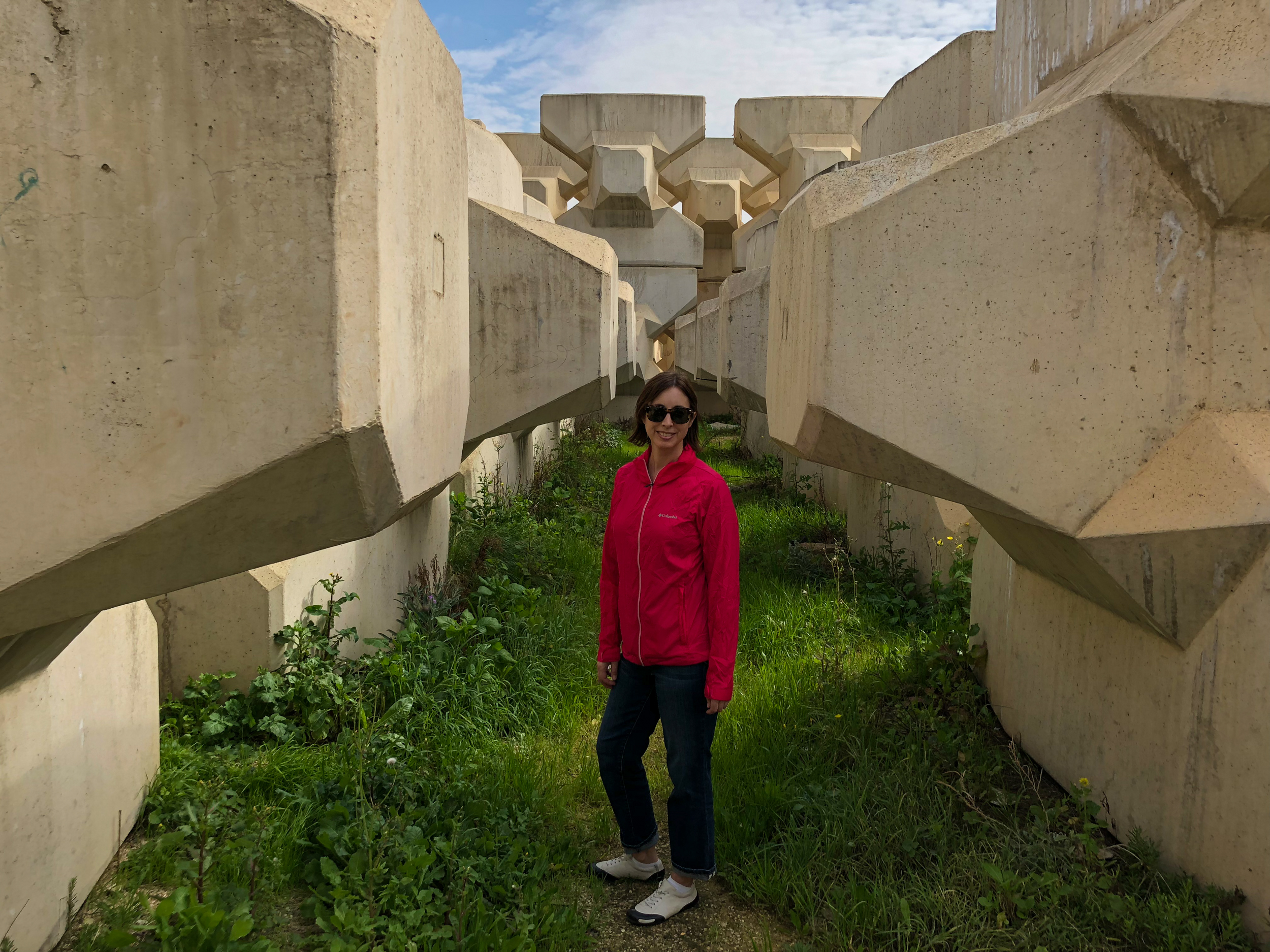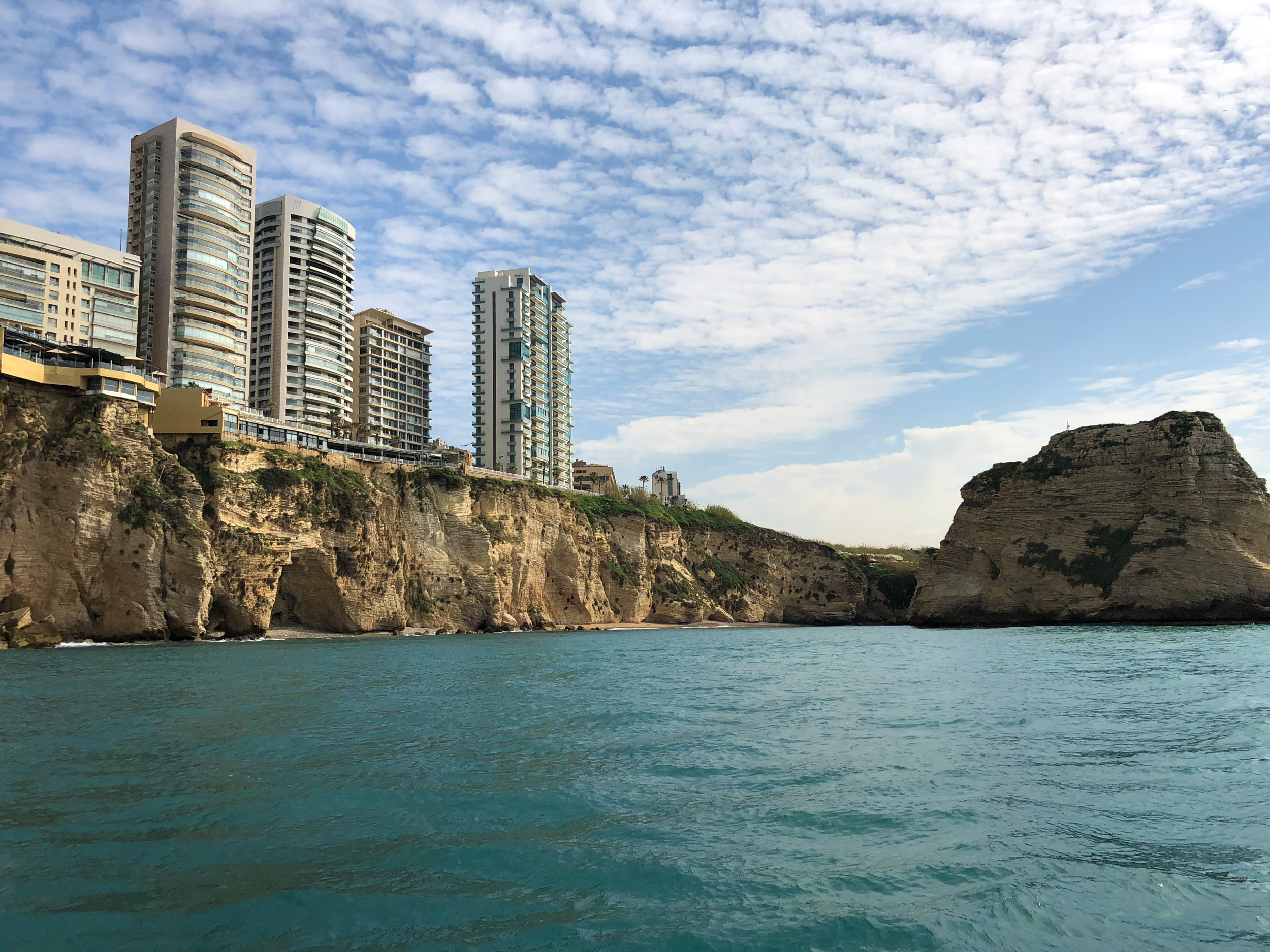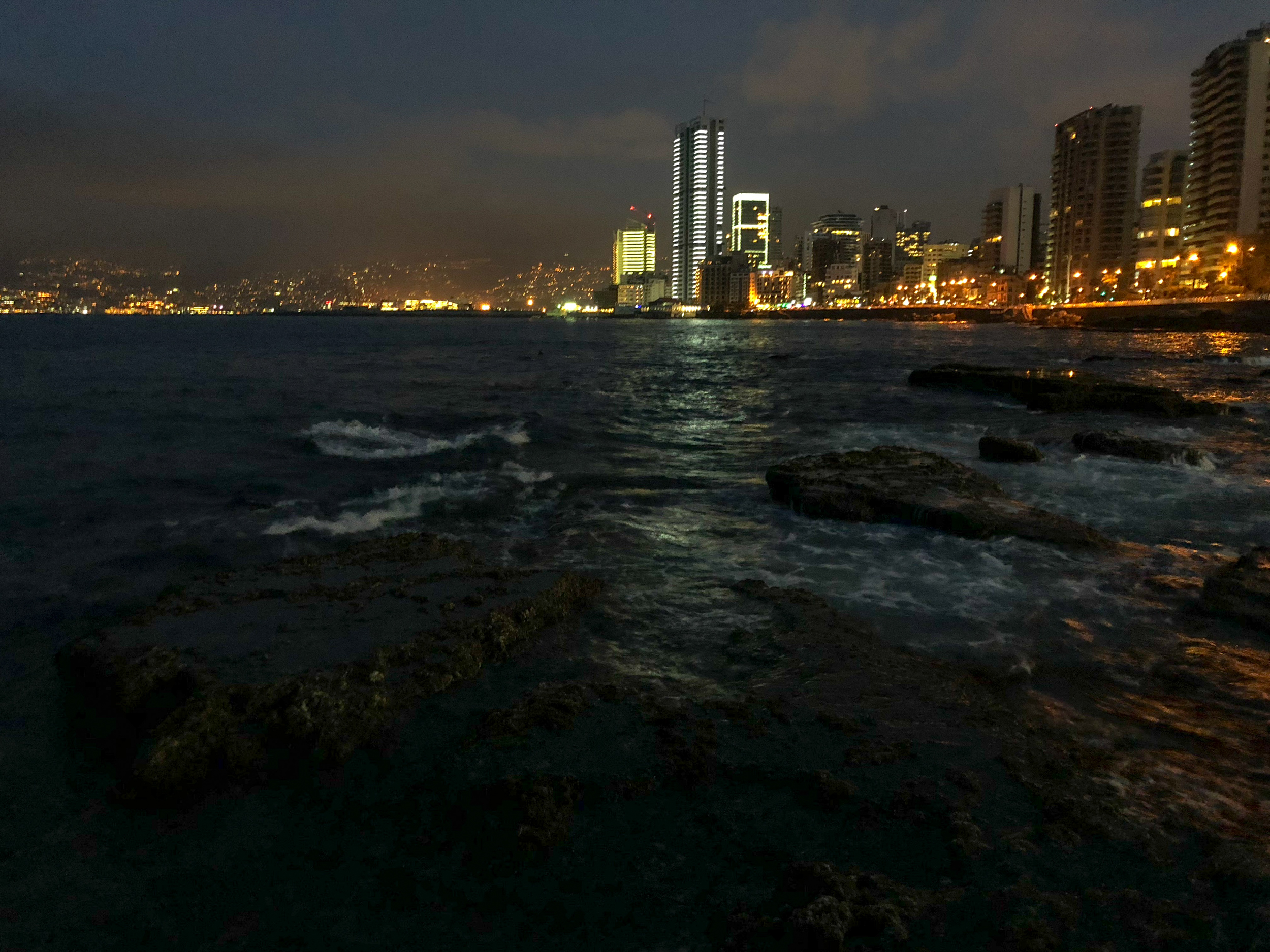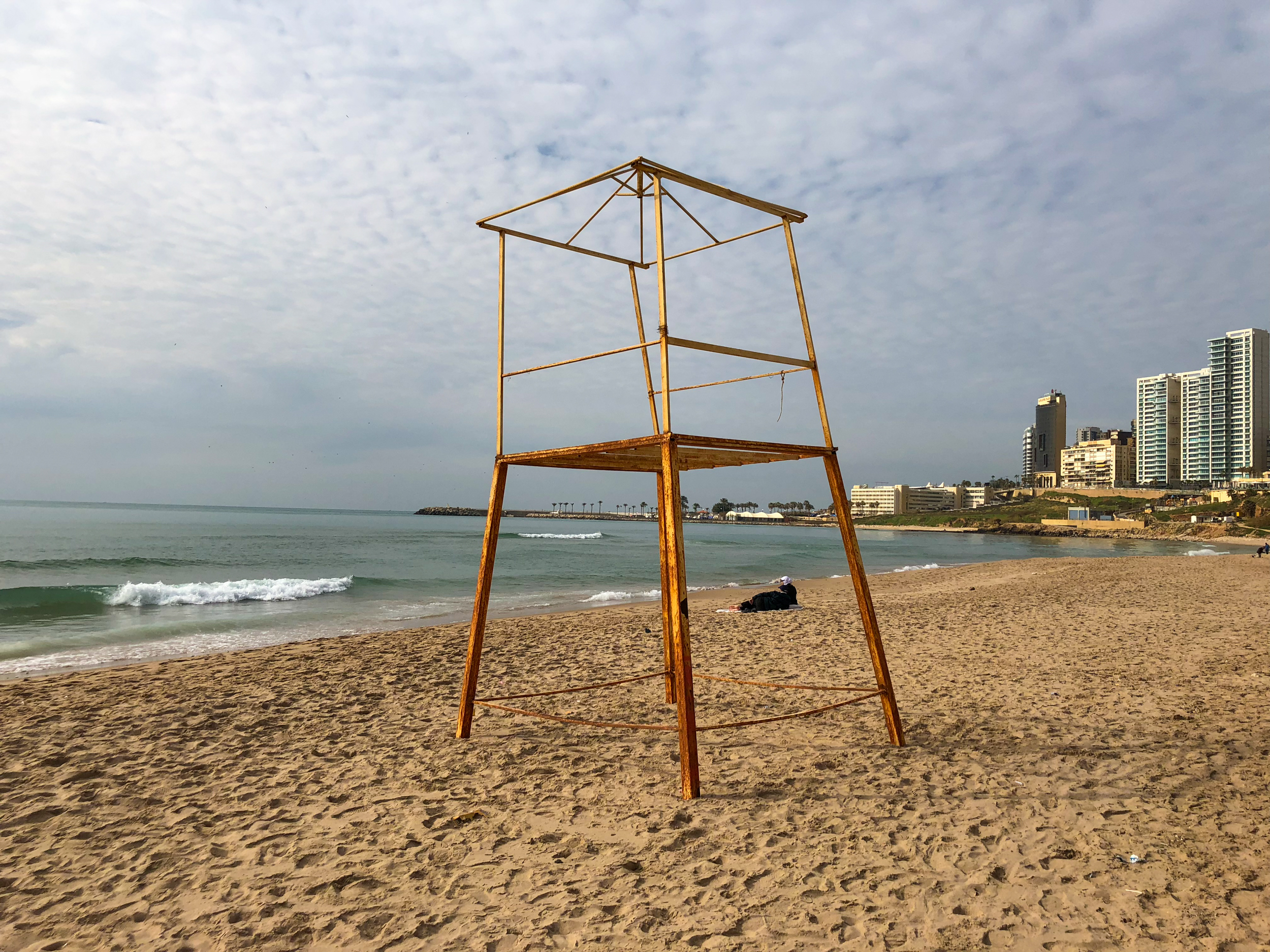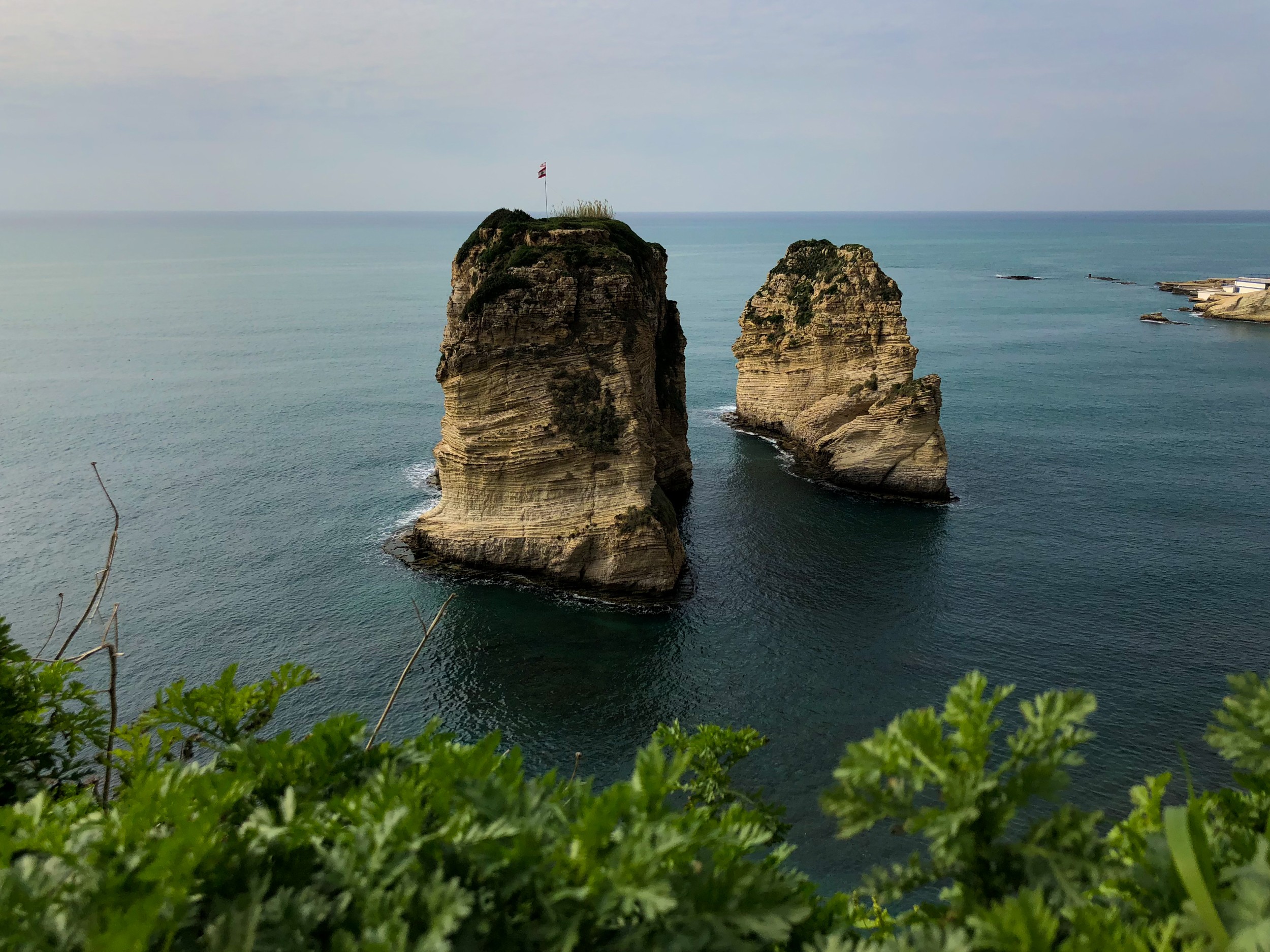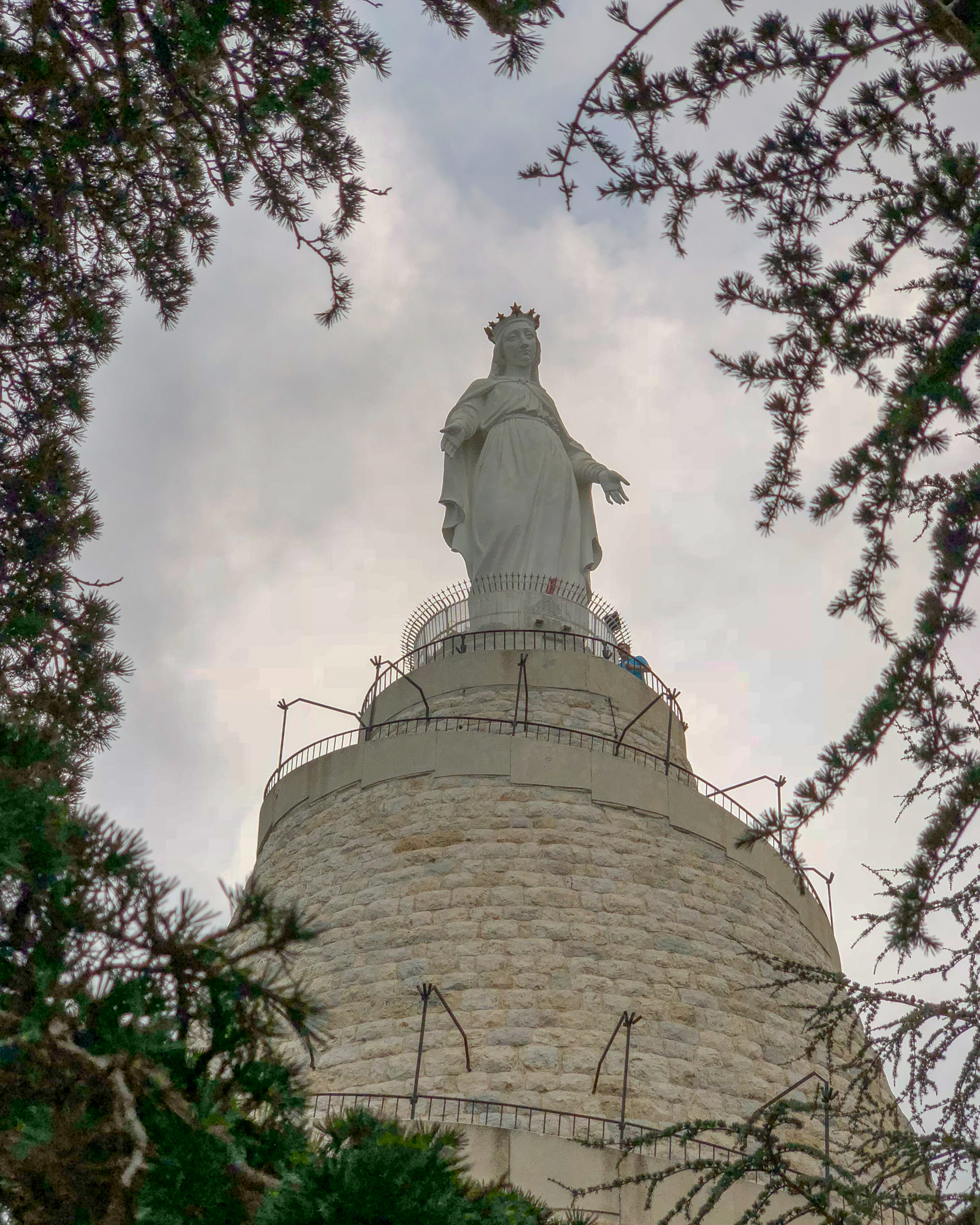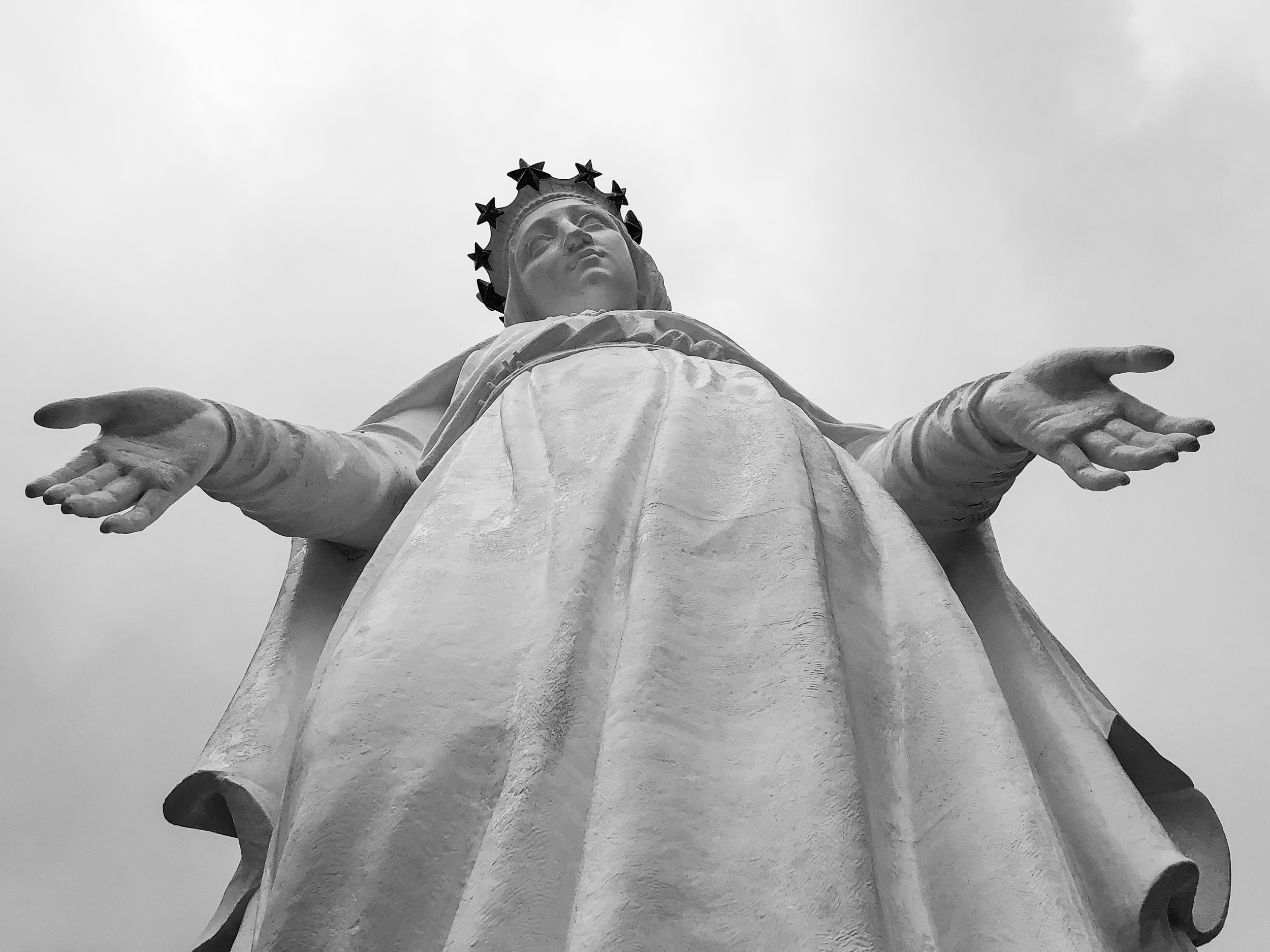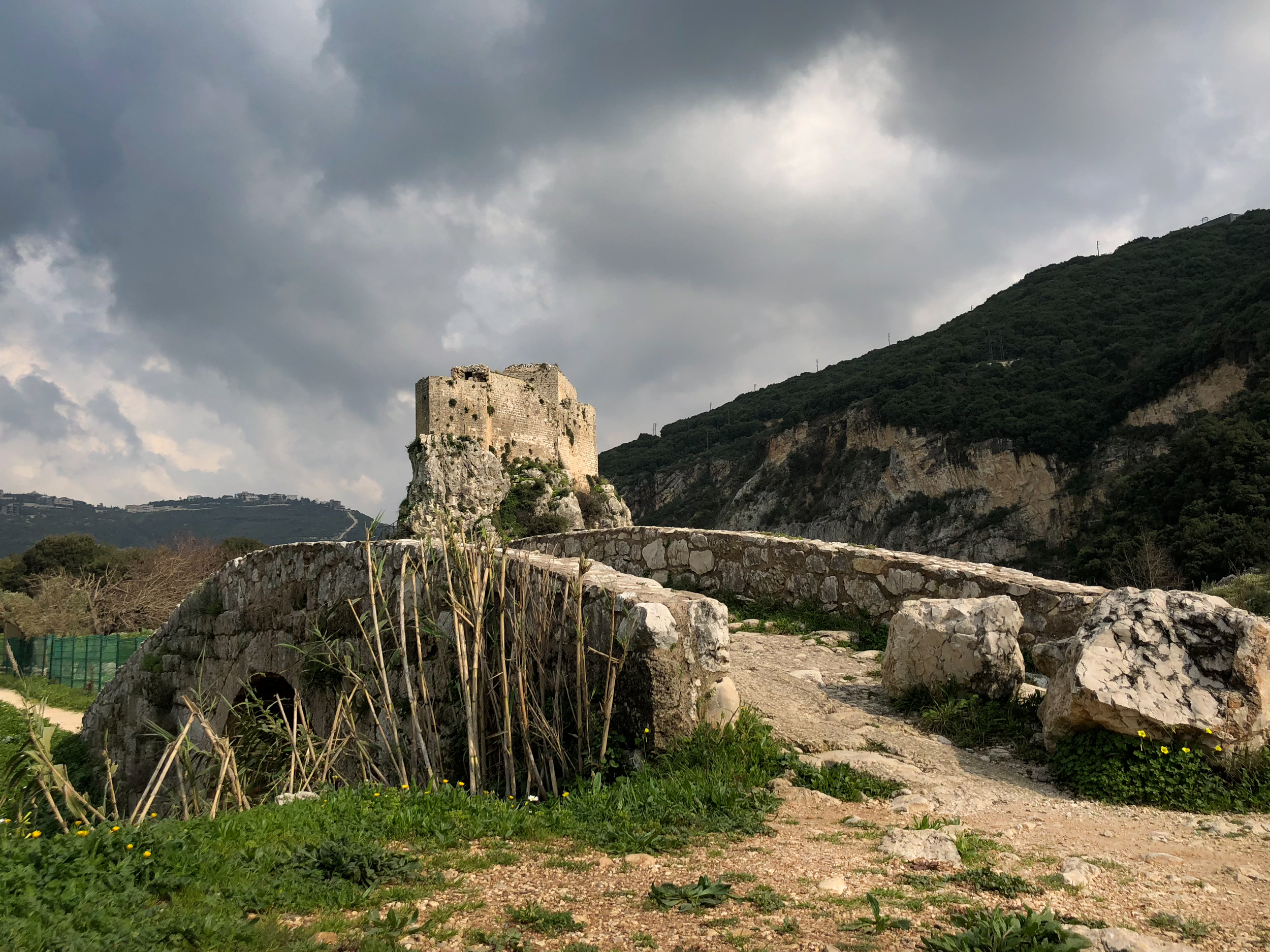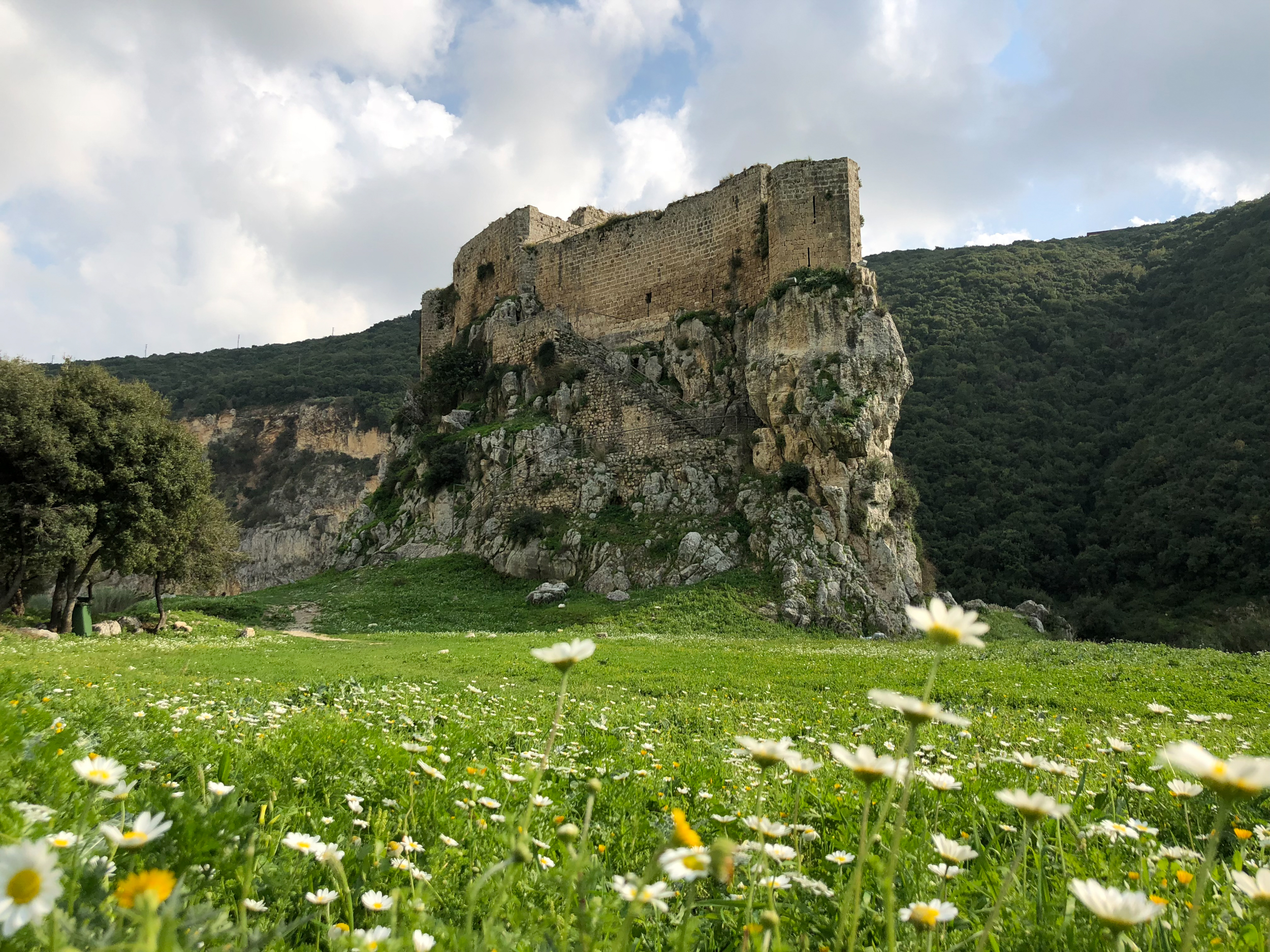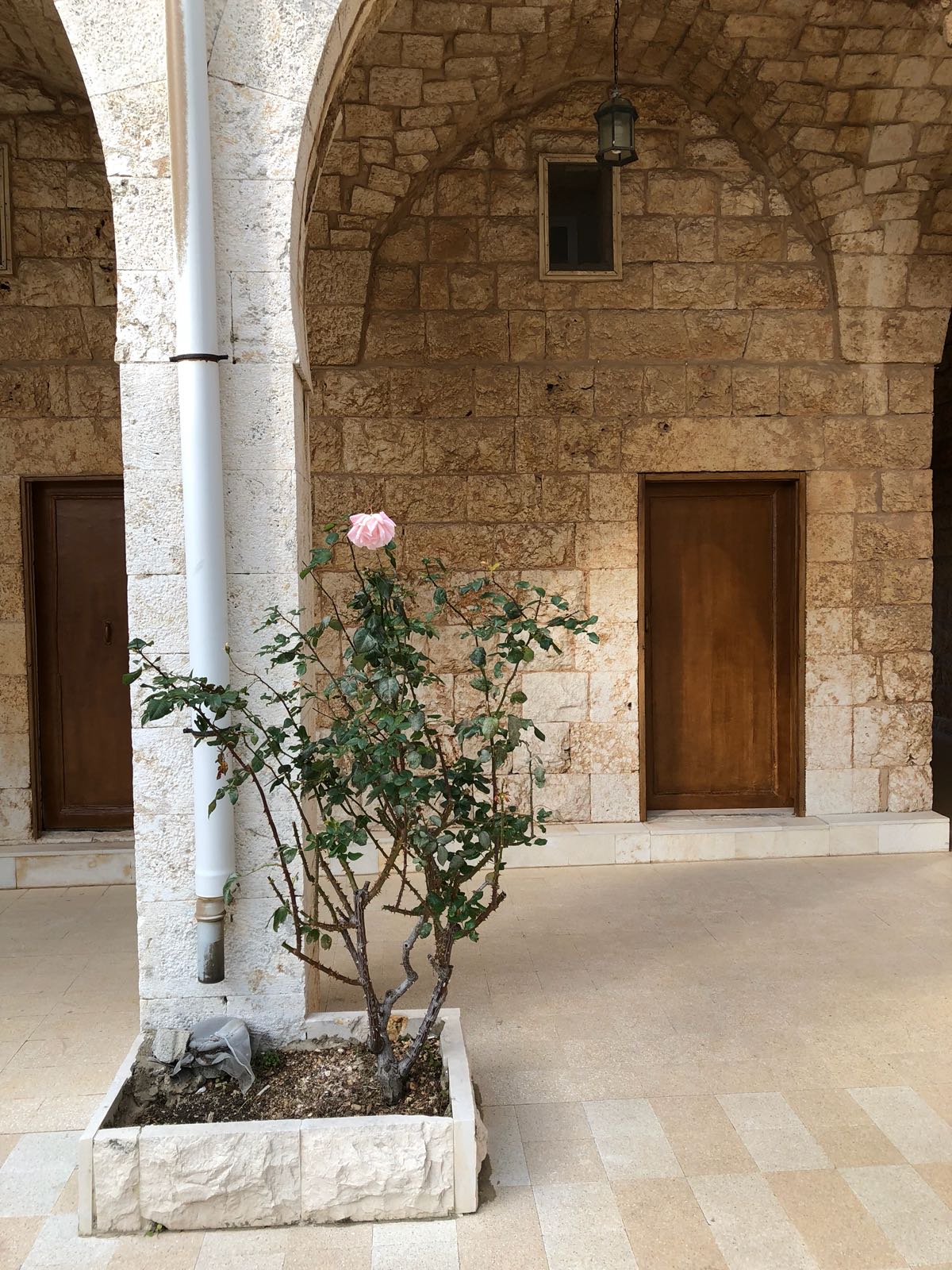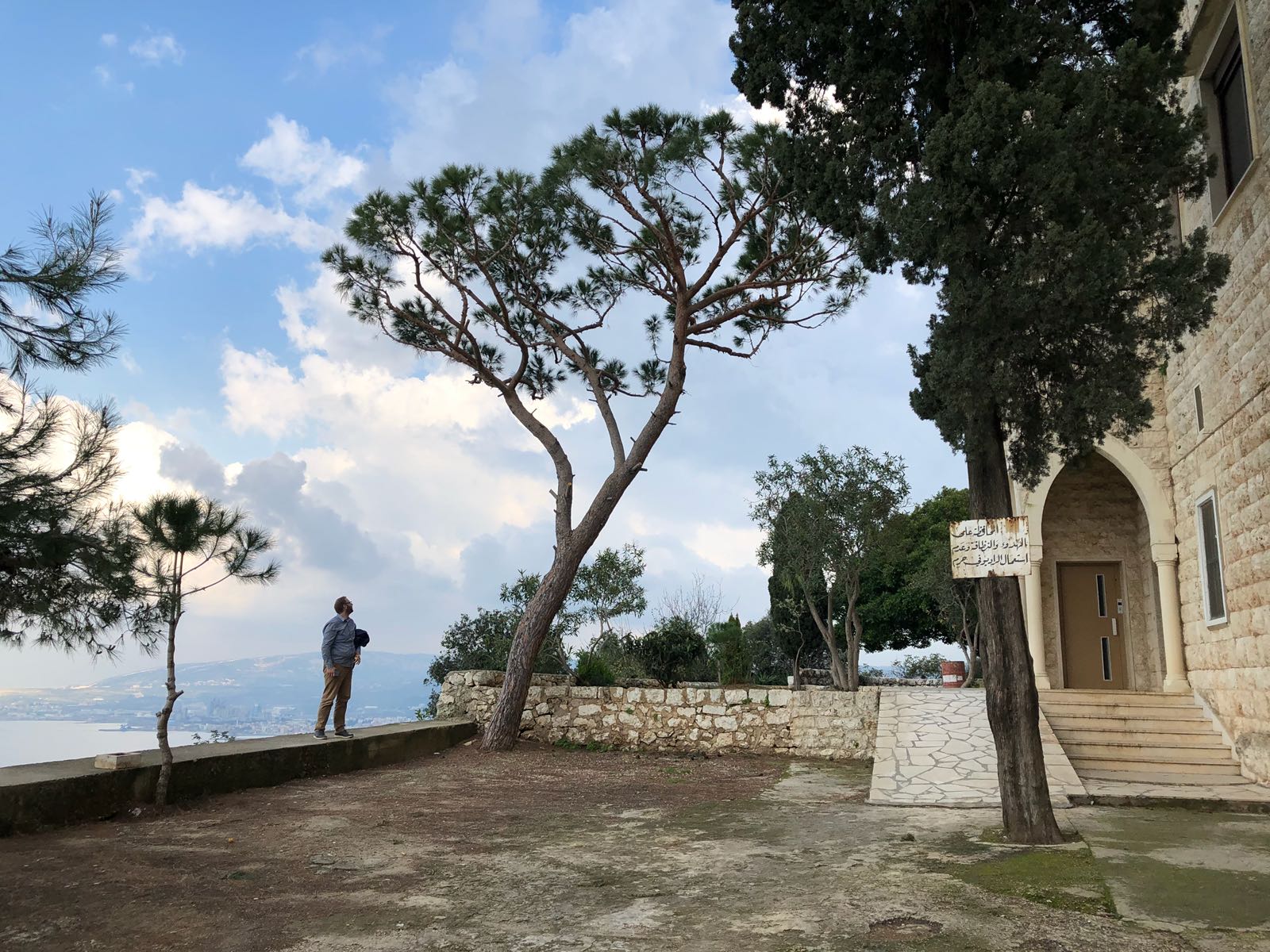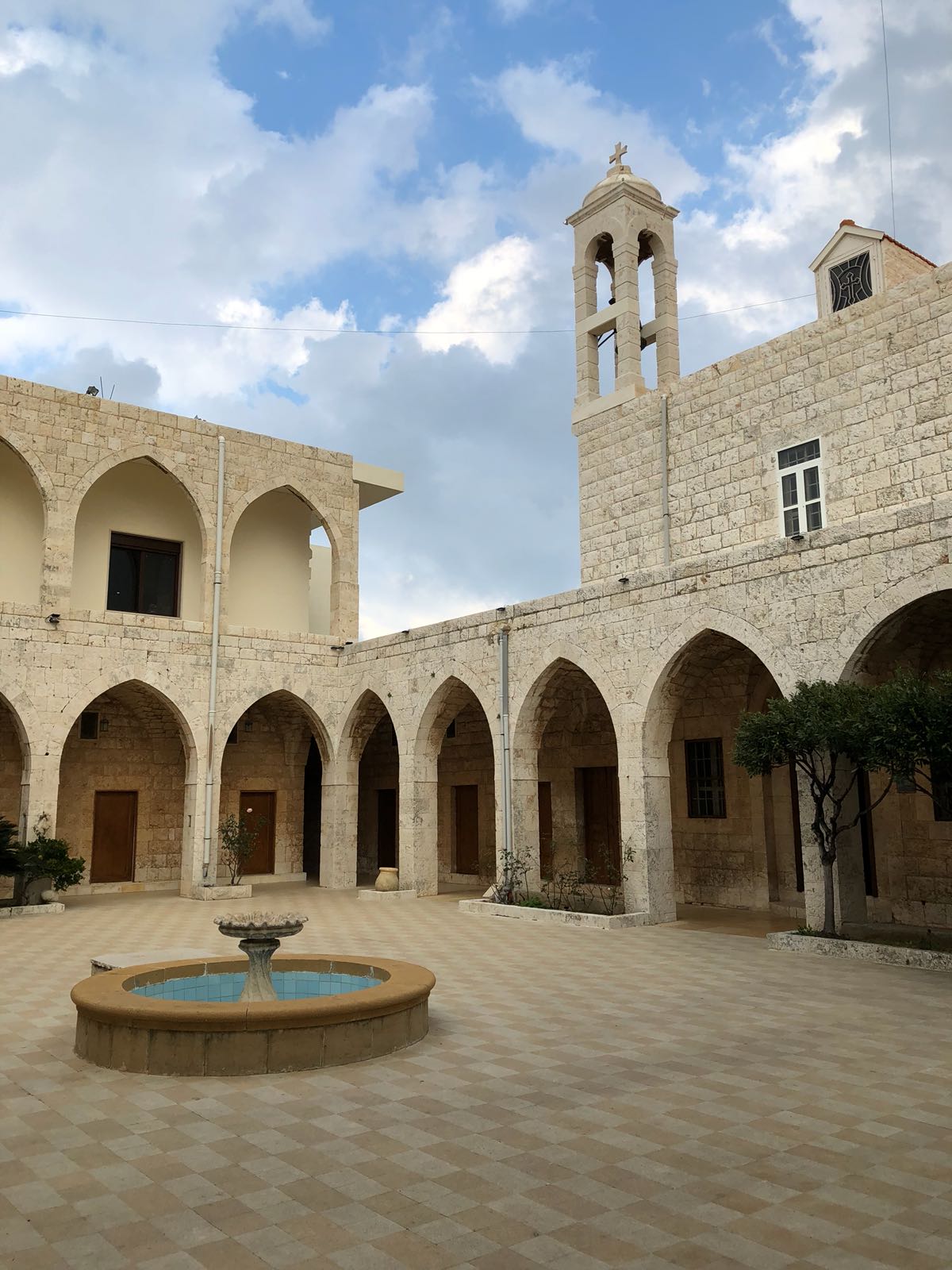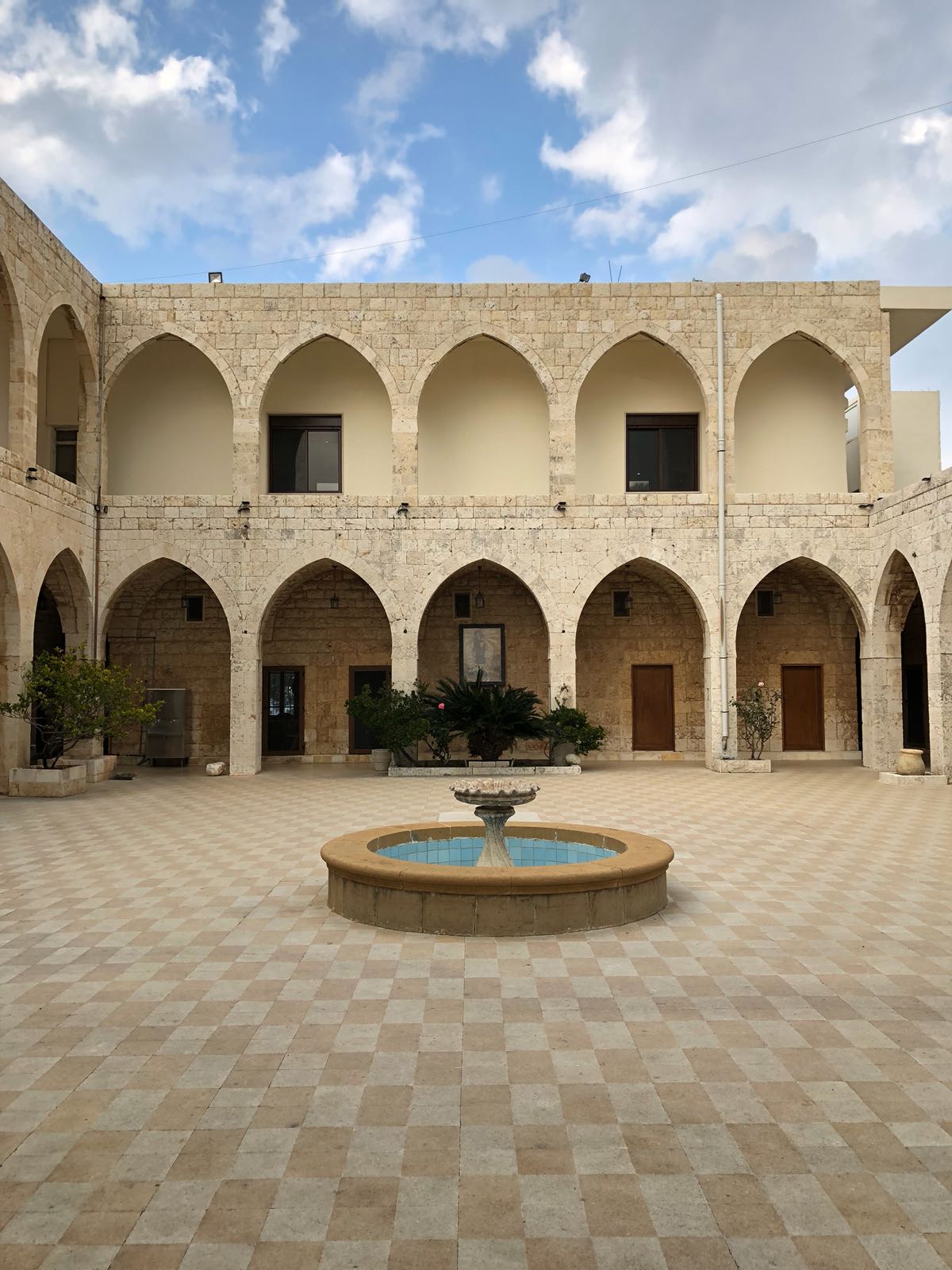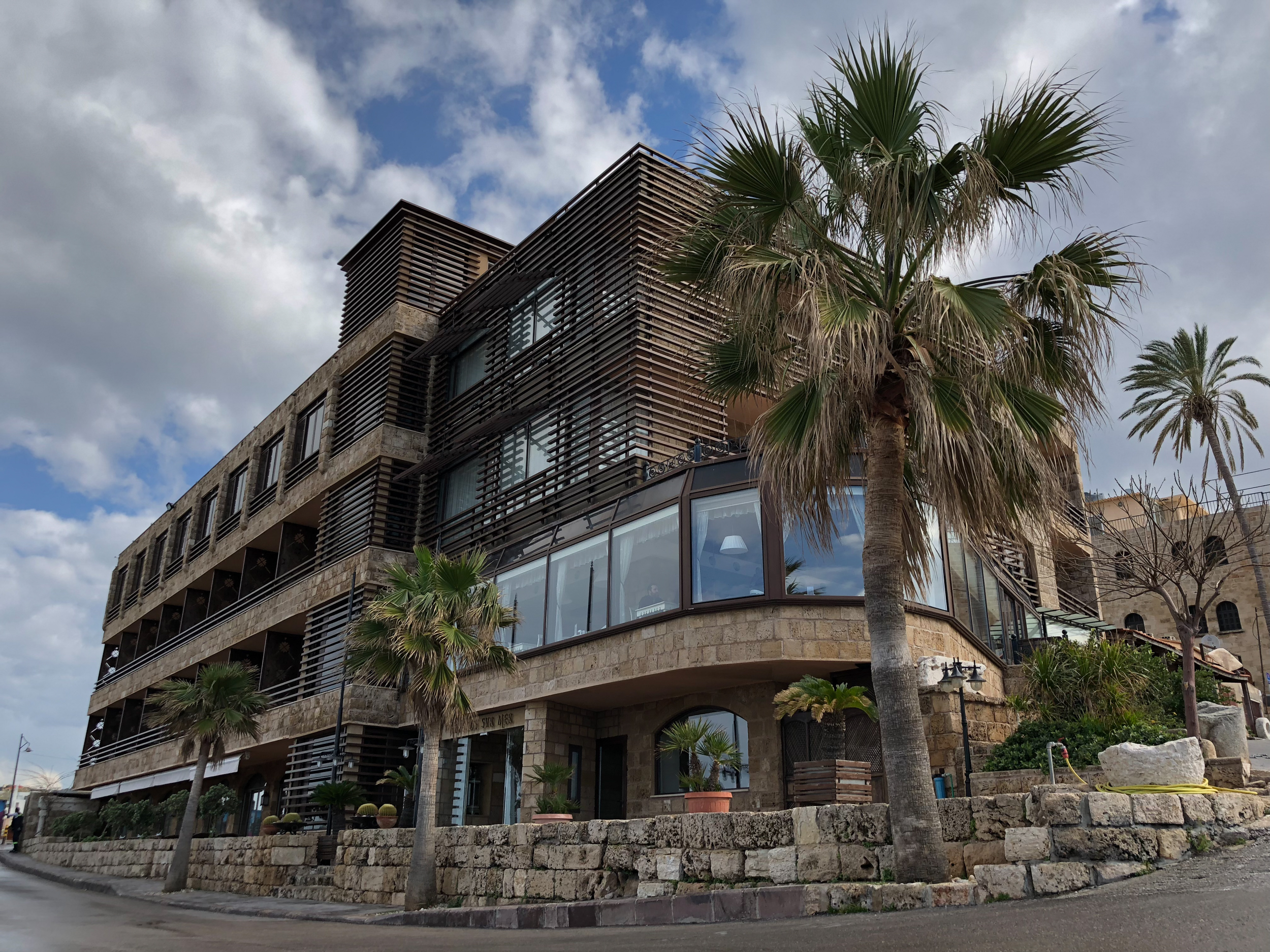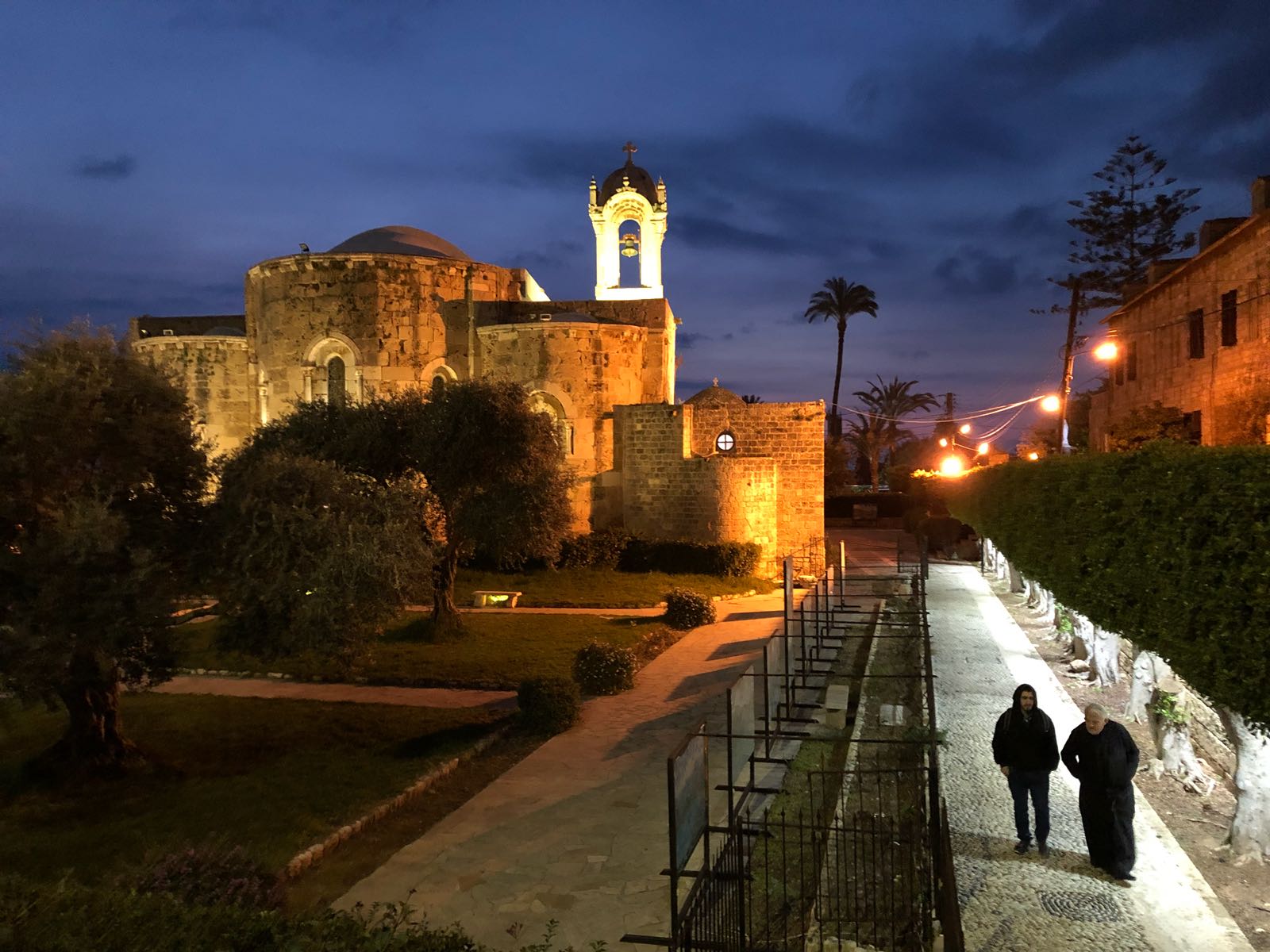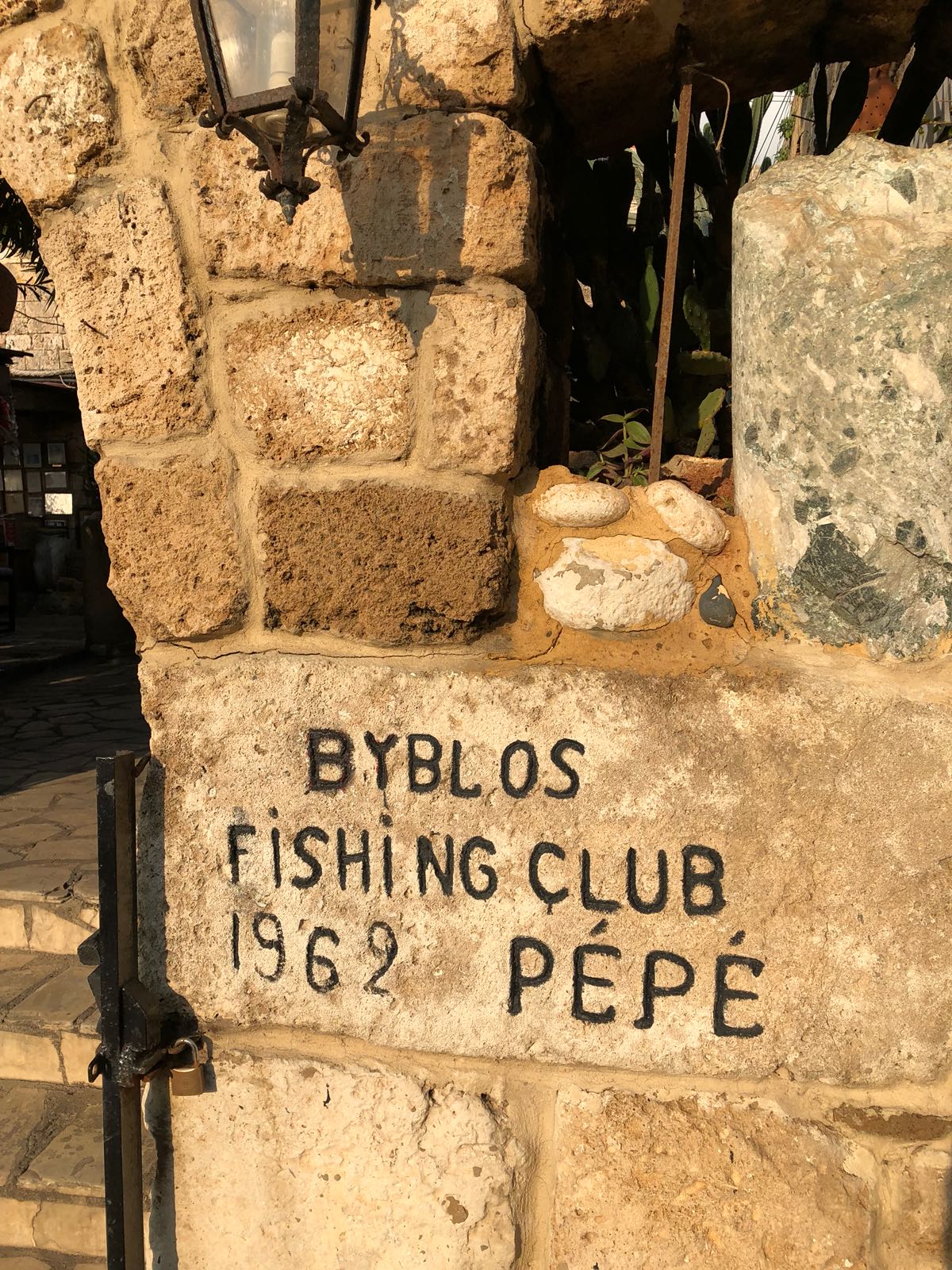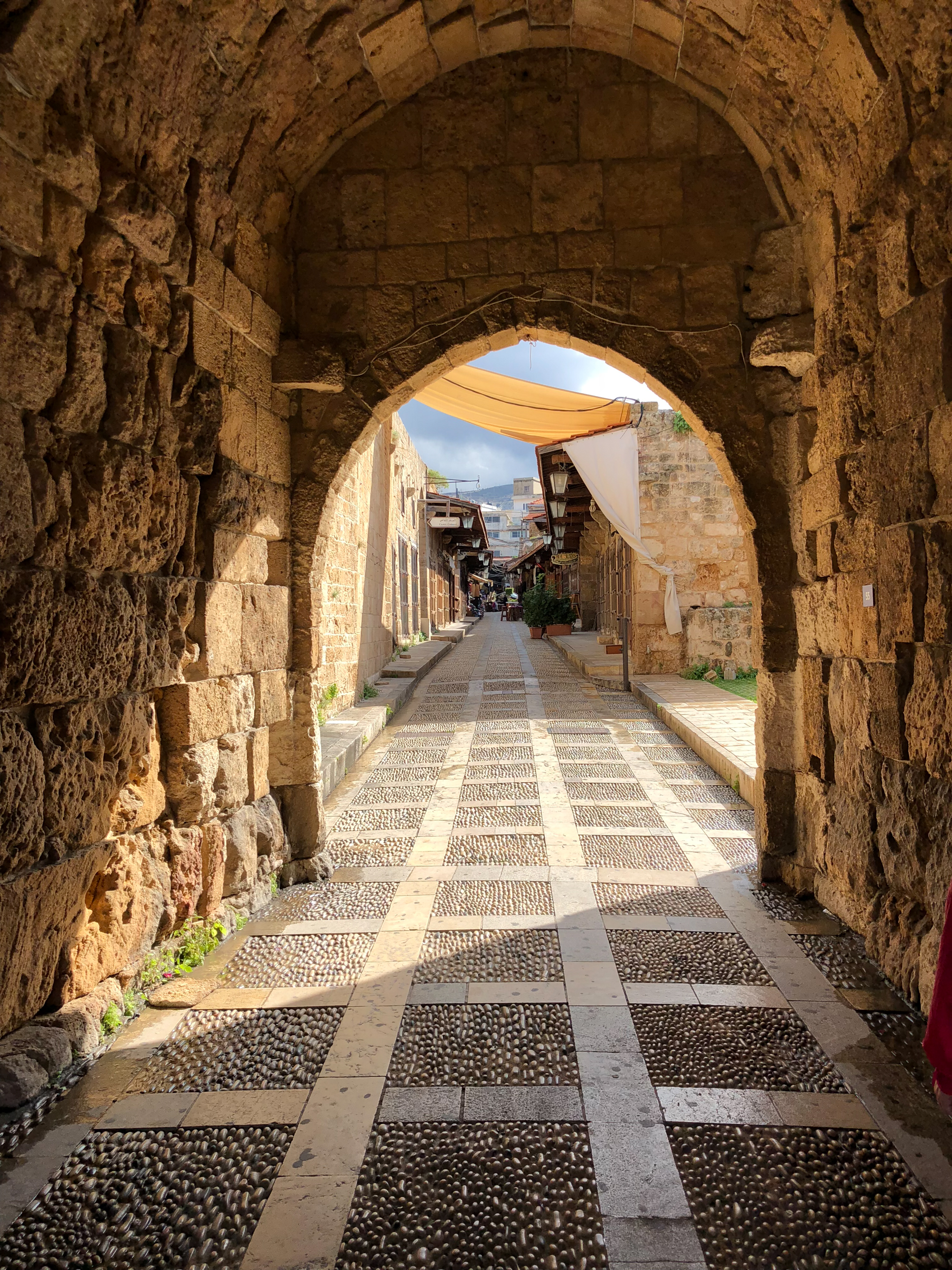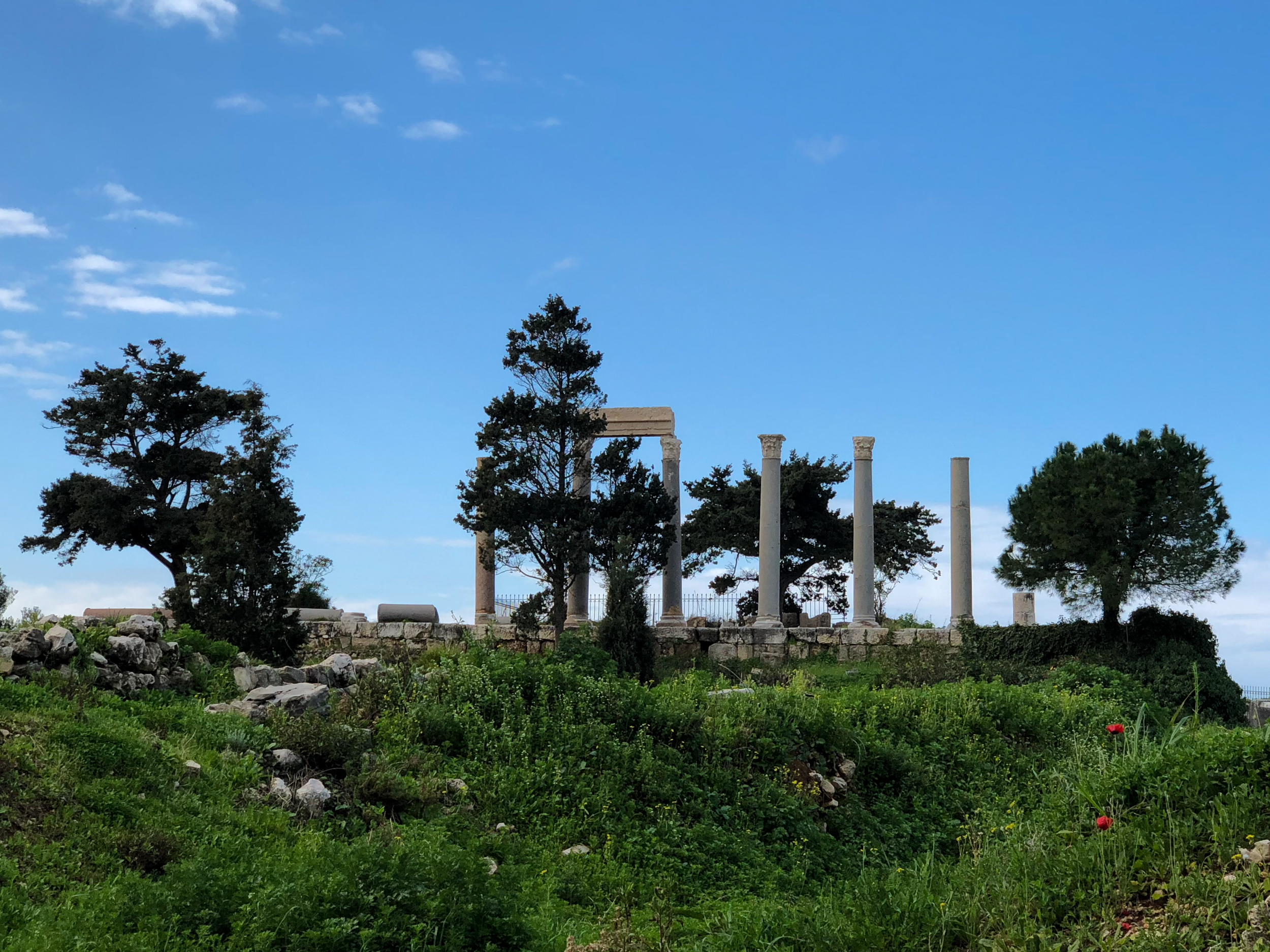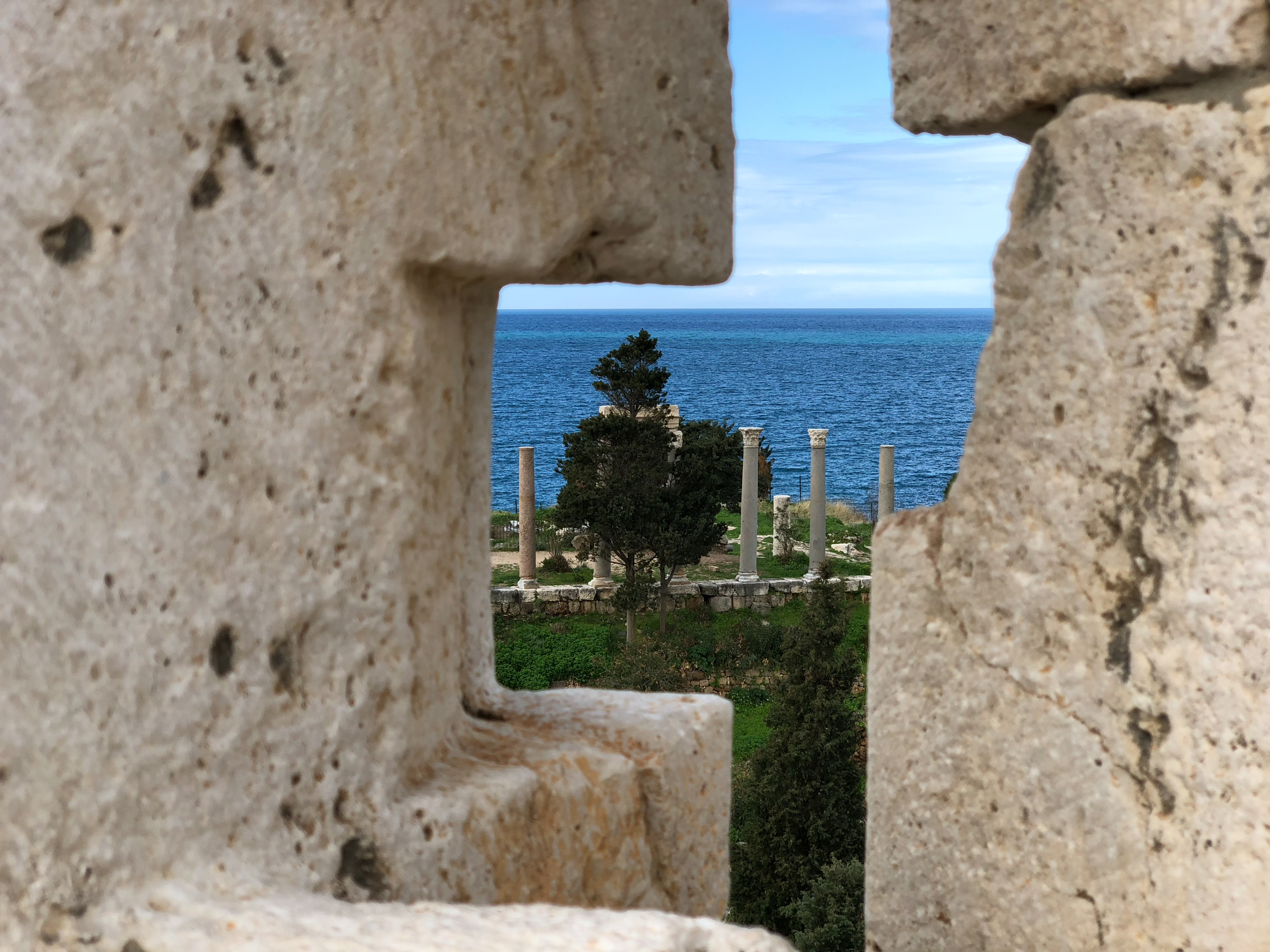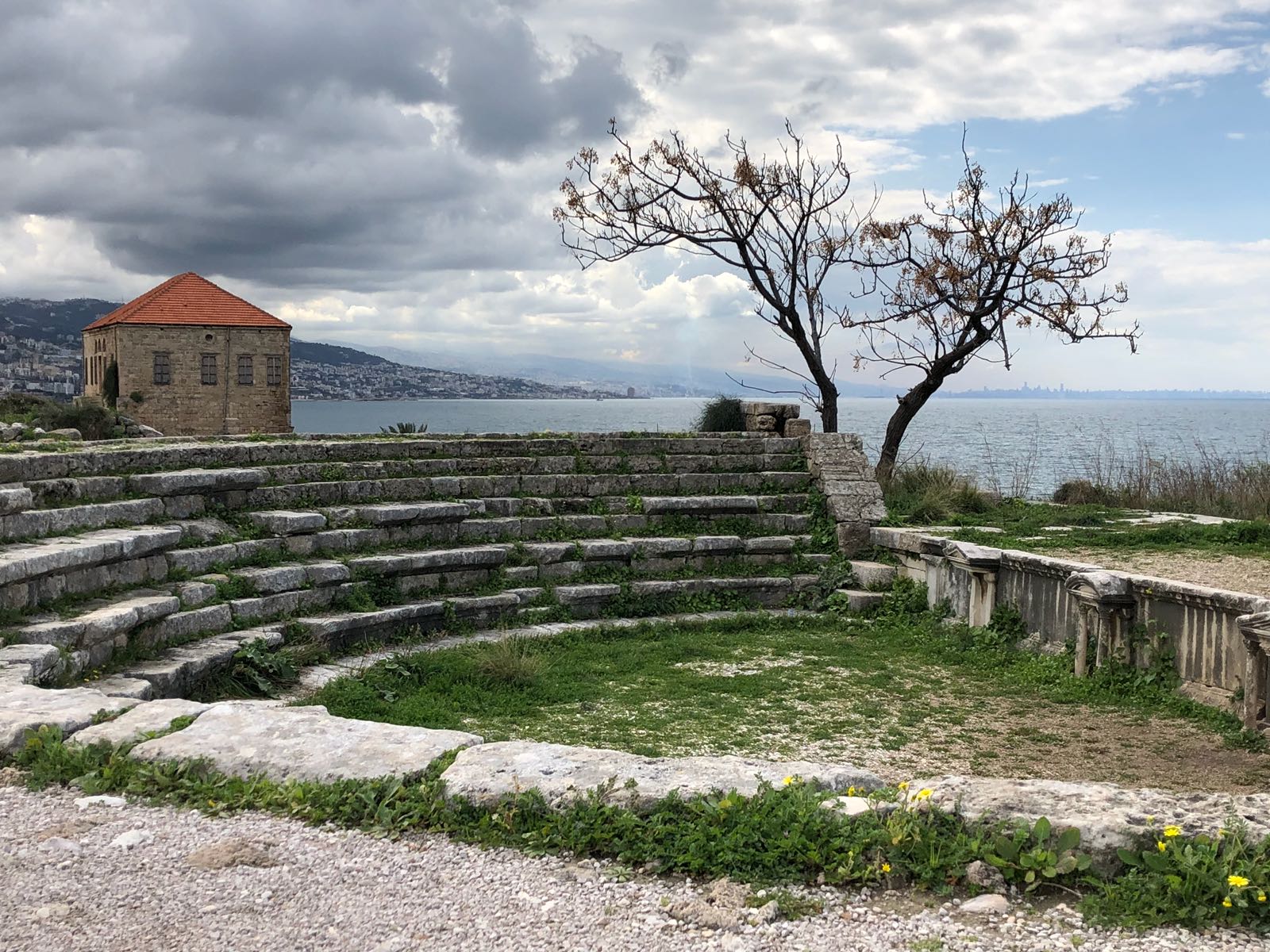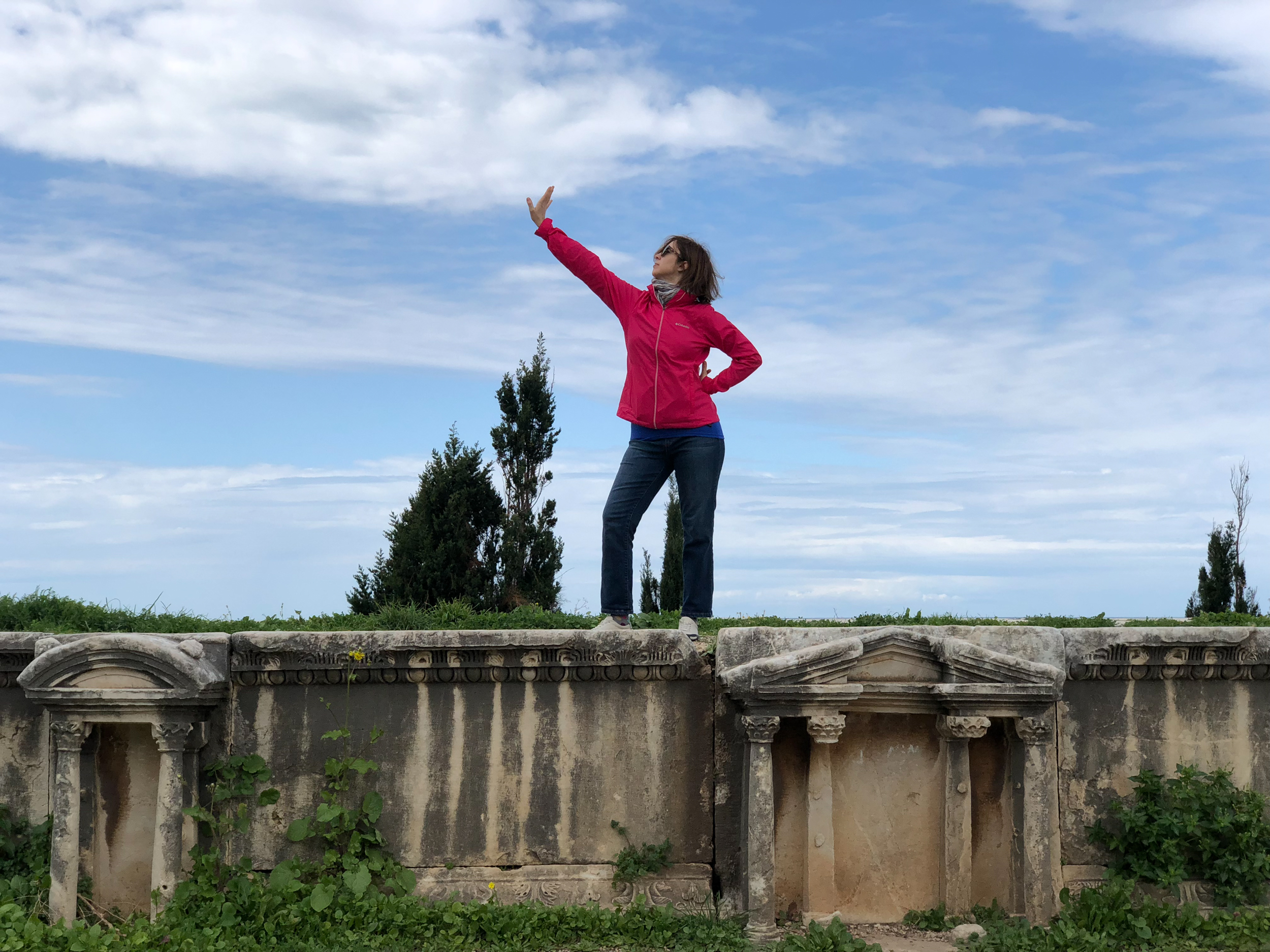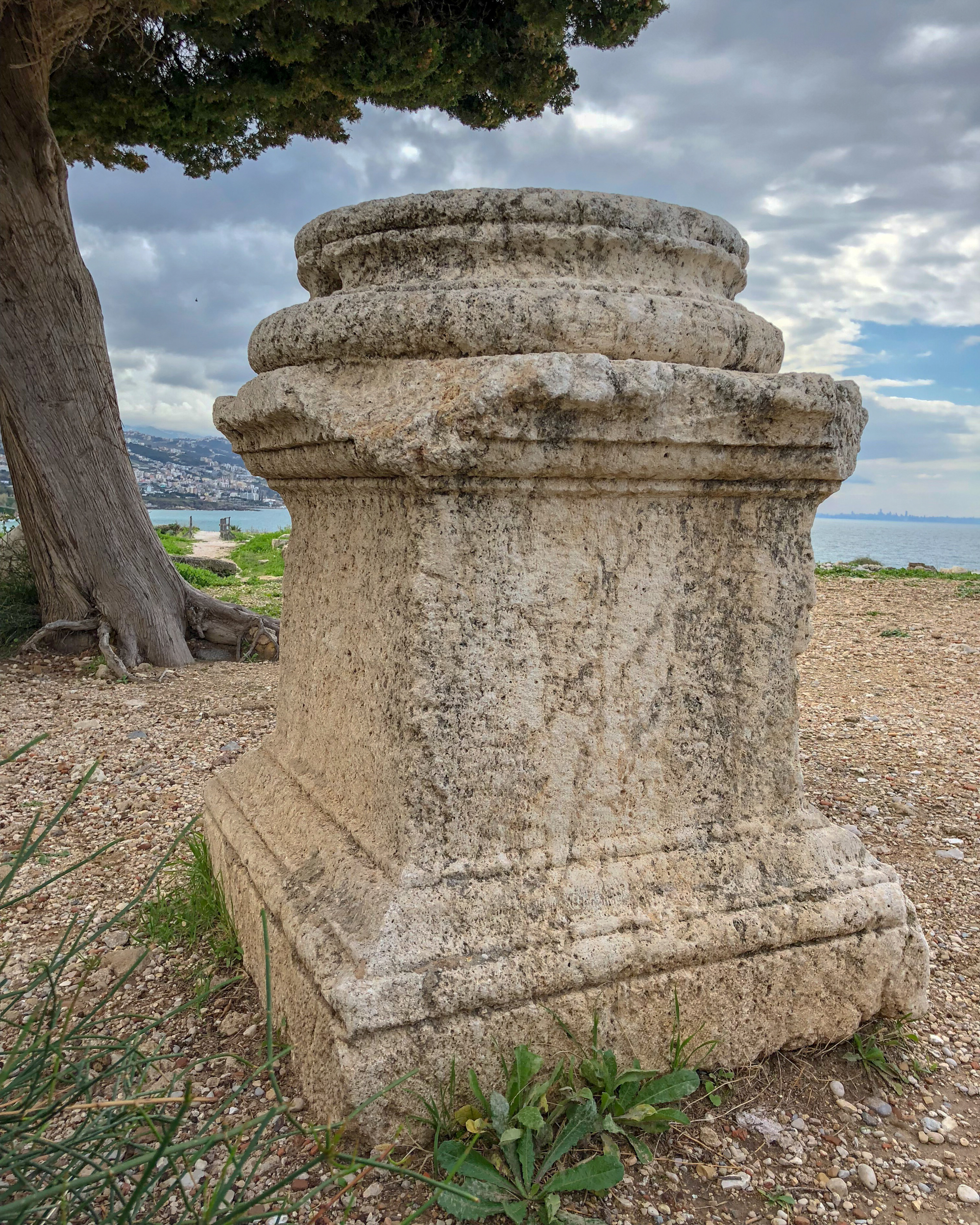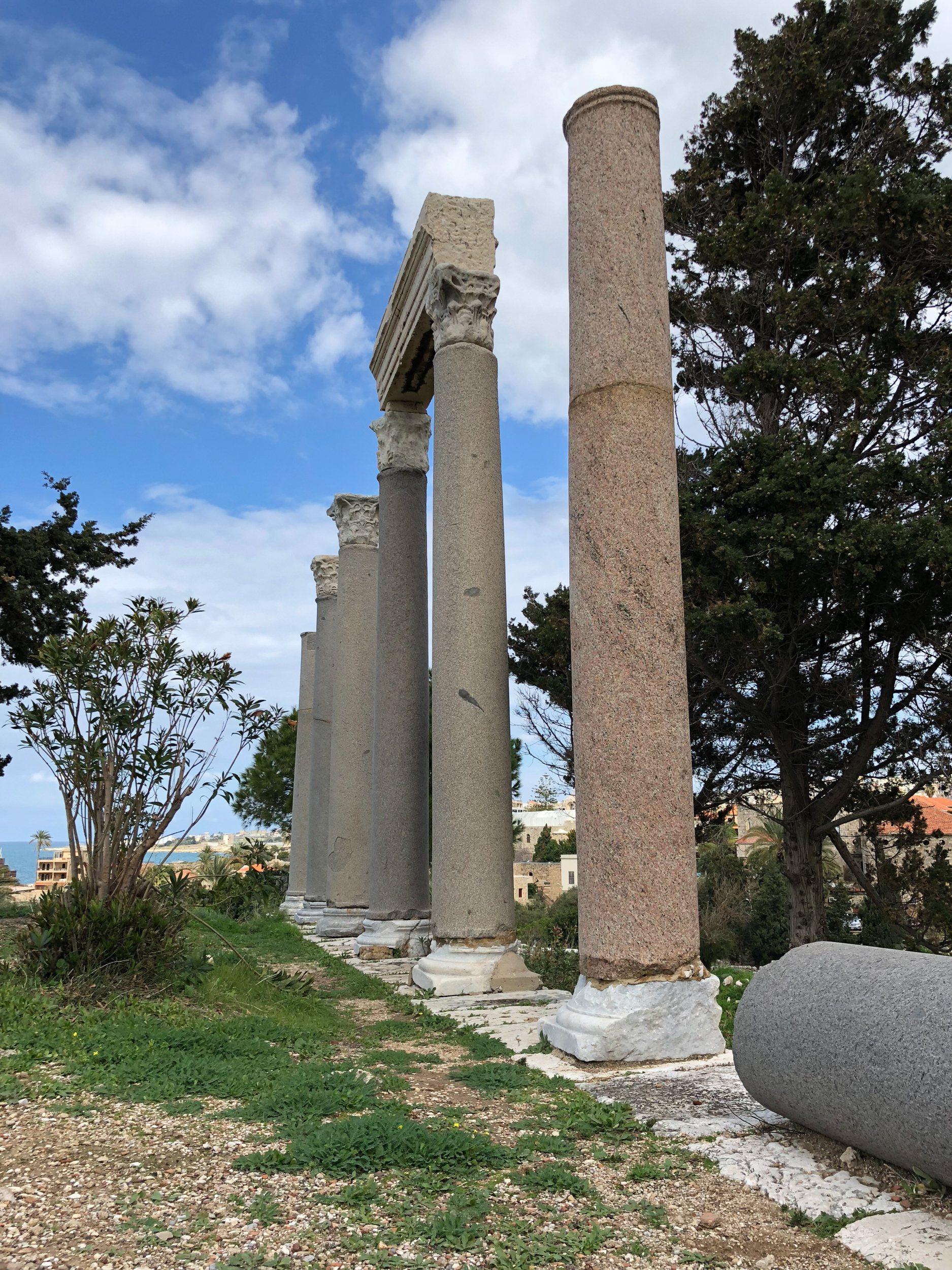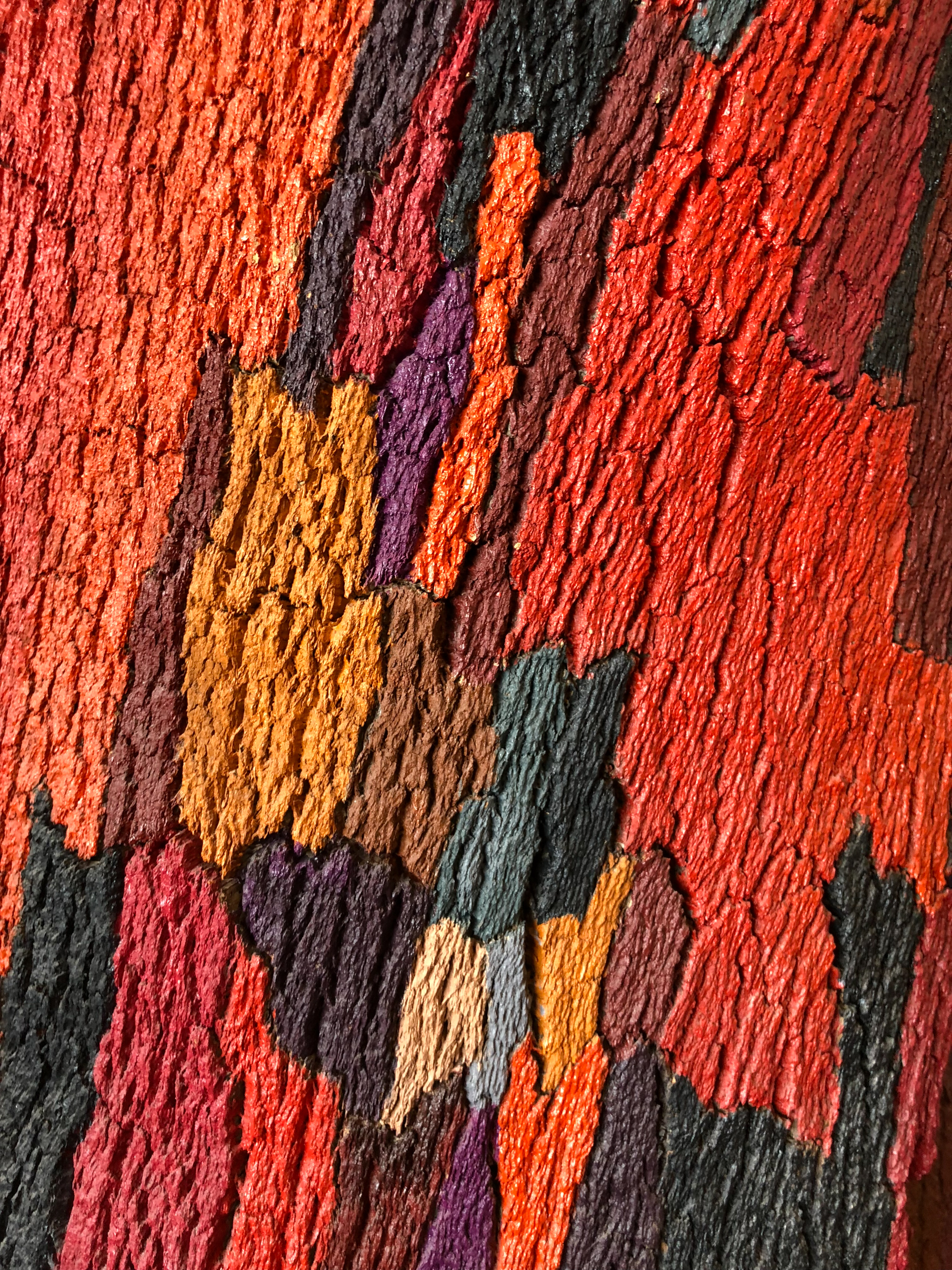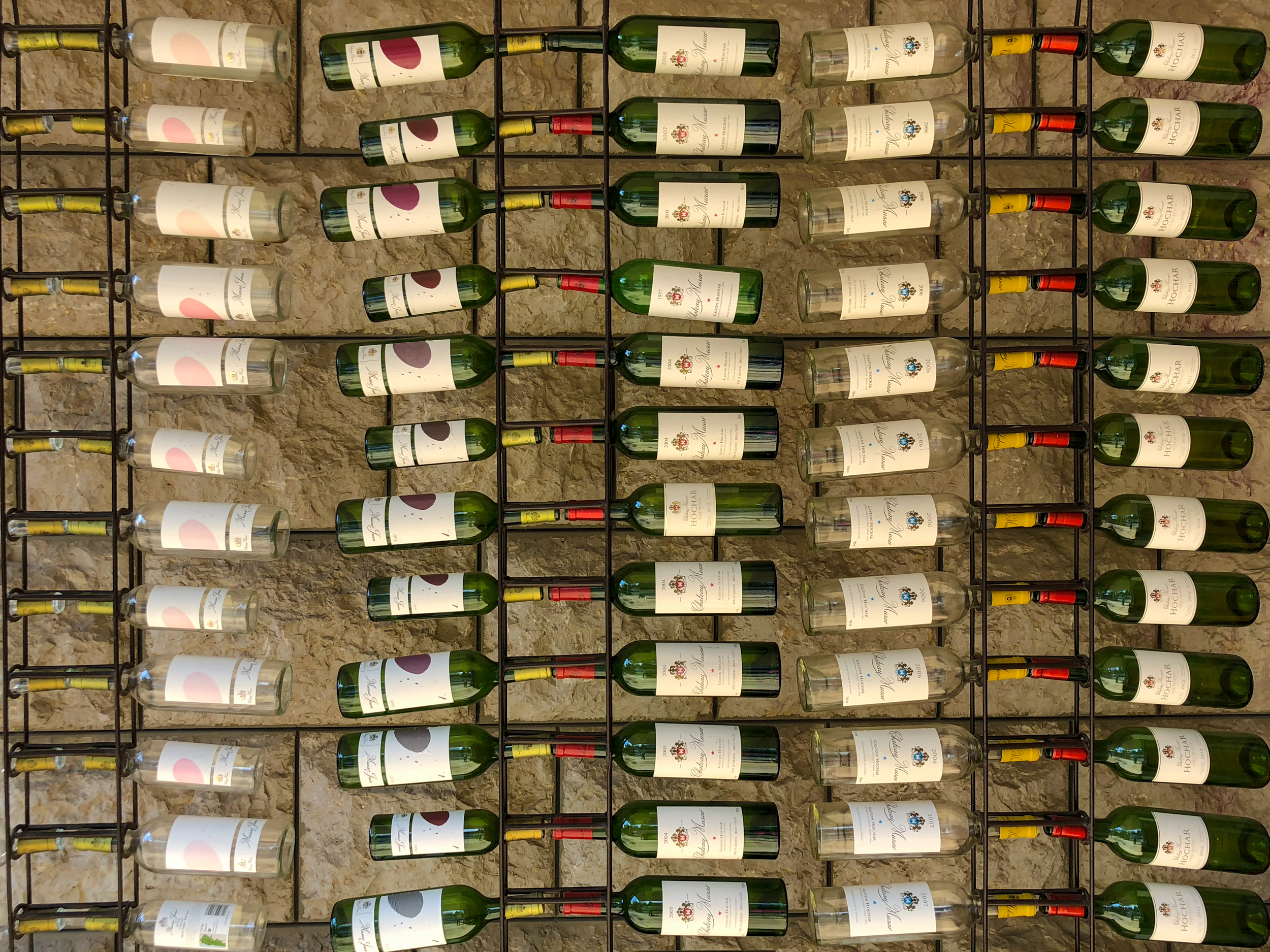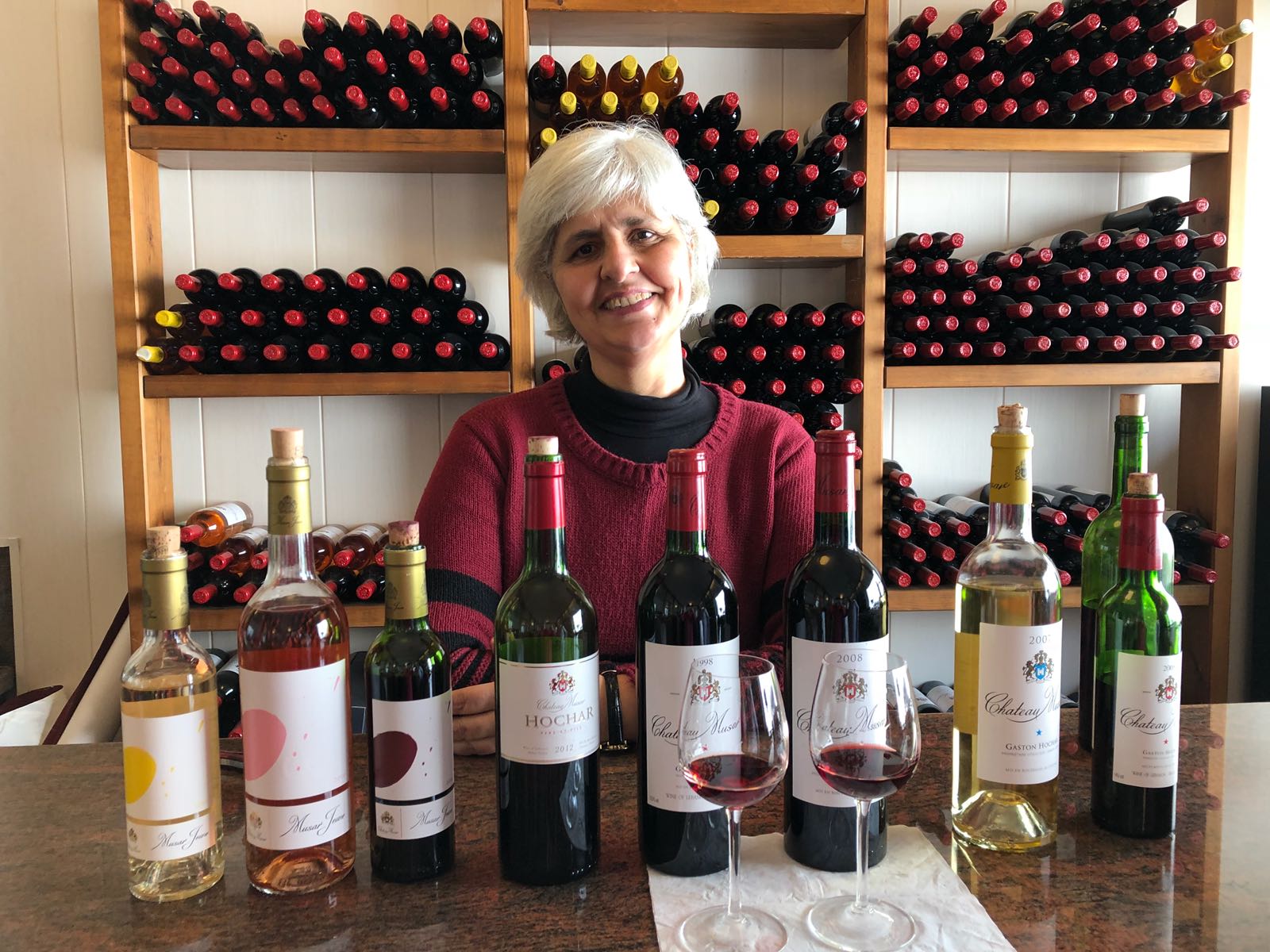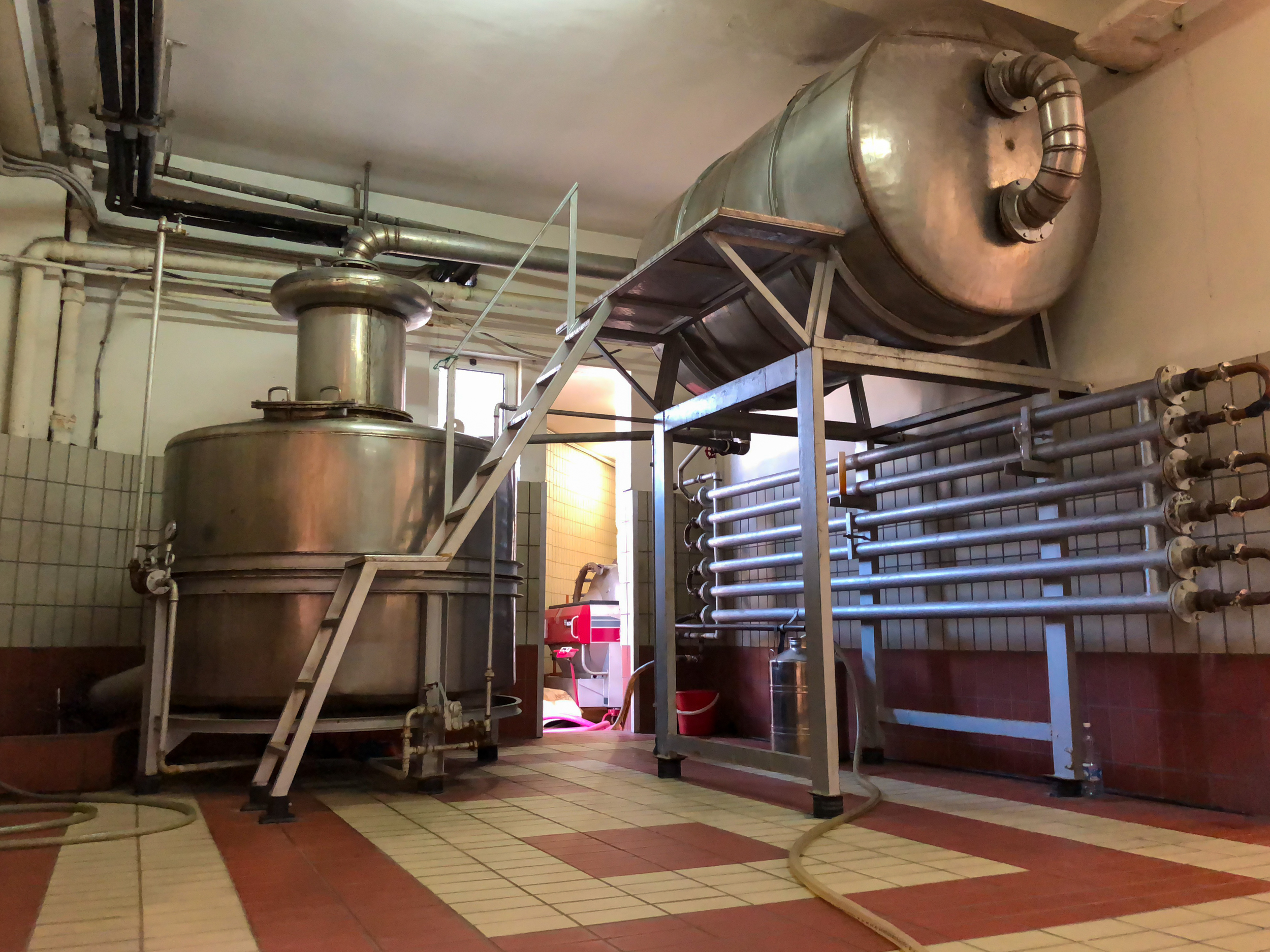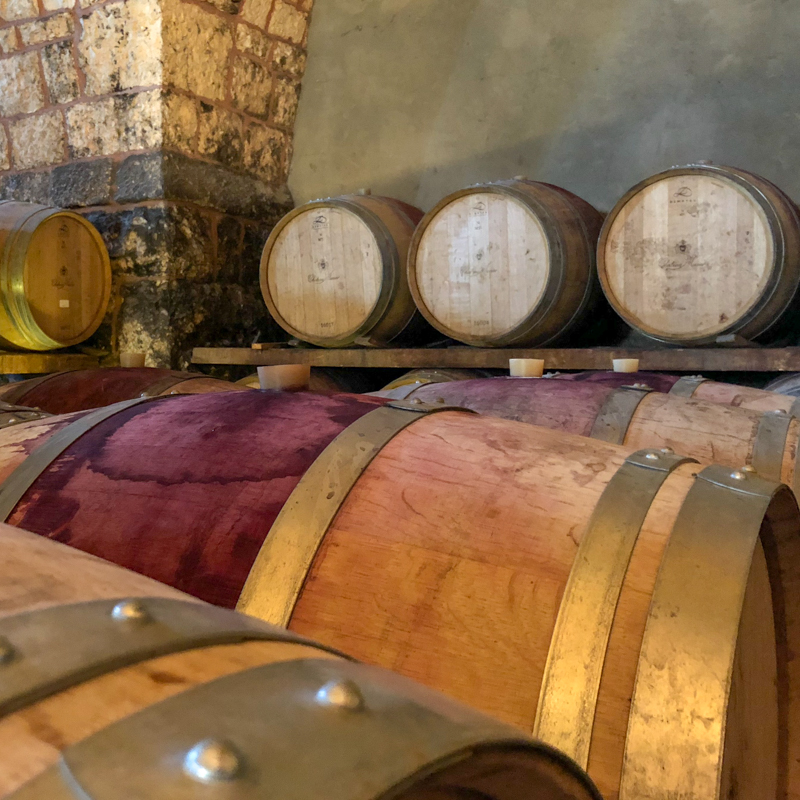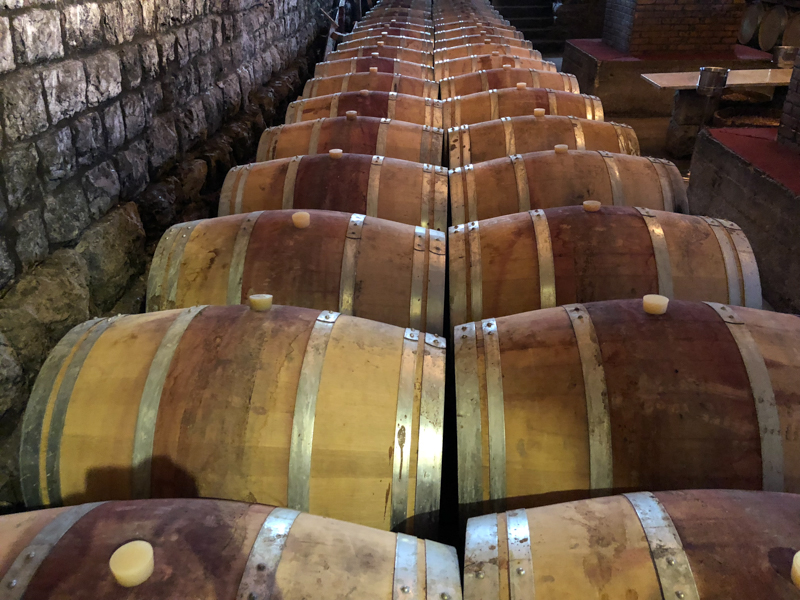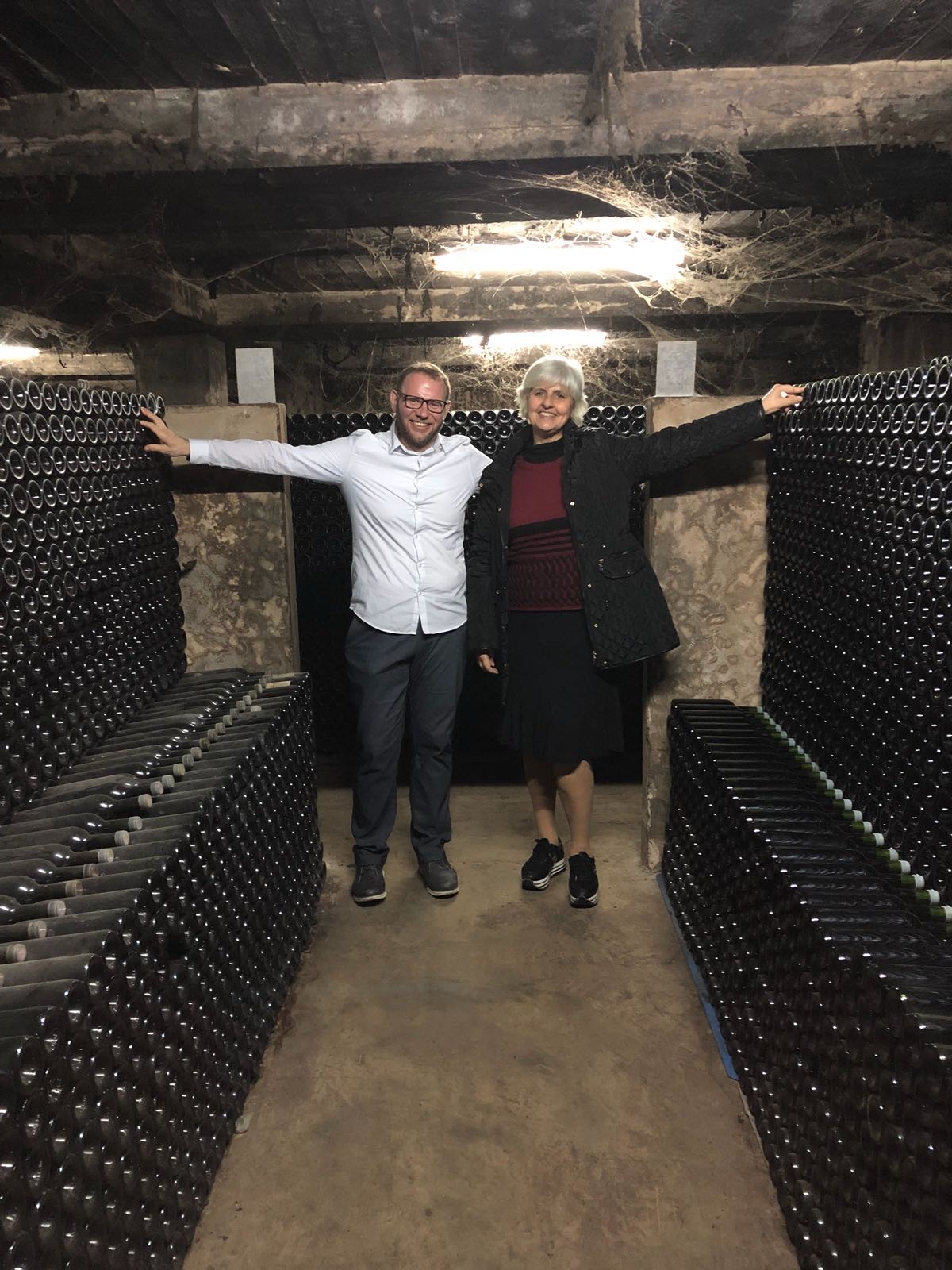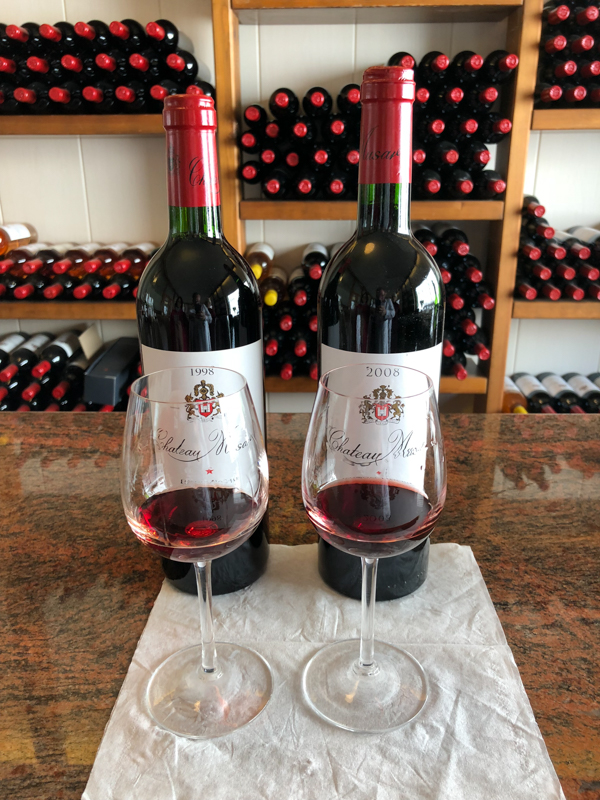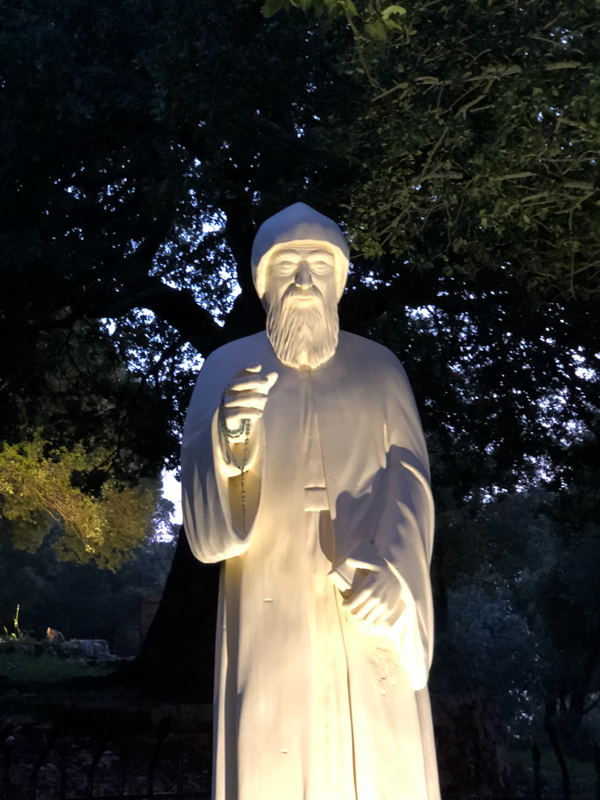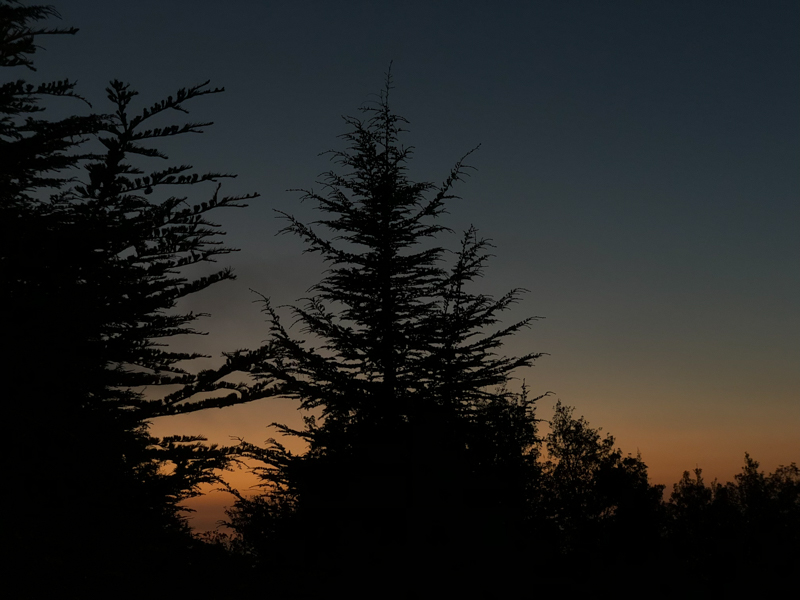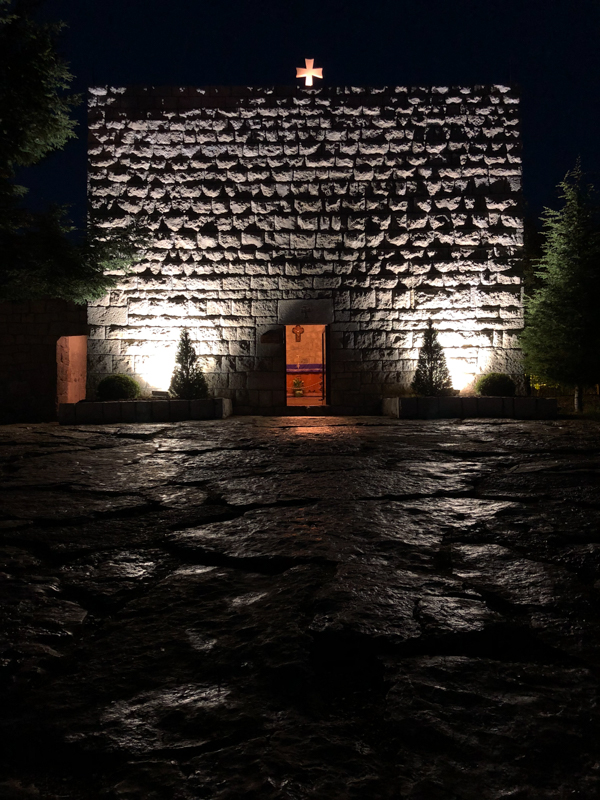Visiting Lebanon in the Offseason
Destination: Beirut, Lebanon
Dates: 18. December 2018 - 23. February 2018
Reason for Travel: Pleasure
Modes of Transport: Plane (Germania), Taxi & UBER
Are you flying to Beirut?
Standing in line at Zurich airport a short, grey-haired man of about 65 with a voluminous suitcase, a carry-on trolley bag of the maximum size allowed in the cabin and a paper bag from a boutique shop waits in front of me. The paper bag has the weight of three bricks. I know how much the paper bag weights because I volunteer to help him move it along. He has more with him than he can carry and pull himself. He makes a throat clearing noise followed by a chewing-sucking sound as if he has hard candies and gum in his mouth - he does not. I am reading a book and waiting for the Germania counters to open. Evidently, they only open two hours before the flight. After a few minutes, the man in front of me asks, "Are you flying to Beirut?" I confirm that I am flying to Lebanon. He follows up with, "For business or pleasure?" I tell him I'm going on a short vacation. He then retorts that I'm going at the wrong time of year. Summer is tourist season, he explains. It's lovely in summer. I tell him that I like visiting places in the off-season. He then assures me that there will be no tourists there in February.
After about another ten minutes, he pulls out two passports: one maroon coloured, the other bright red. I have my fire engine red Swiss passport in hand and recognise that he too has a Swiss passport. I look around and notice that almost everyone in line, though they are mostly speaking Arabic have Swiss passports. "Five years!" he exclaims, "I got my Swiss passport after living in Switzerland for five years." Then he shows me his Lebanese passport, "I just got this last year. I was born in Lebanon; I am Lebanese." I put one and one together and ask him the nationality of his parents. "My parents were from Iran, but they lived in Lebanon many years before I was born." "You're lucky to have received a Swiss passport so quickly, that doesn't happen anymore today. I think you to live here at least 12 years," I tell him. "Thirteen," he retorts.
This brief encounter at the airport highlights one of the many facts about modern-day Lebanon. It is estimated that there are some 15-20 million Lebanese on earth, yet only around 4.2 million live in Lebanon. The Lebanese diaspora is one of the largest in the world. Though some might believe that it was the civil war that scattered Lebanese across the globe, "the Events," as they are known locally, were just another reason for people to leave the Levant. The truth is that the Lebanese have always emigrated sometimes it was for business and trade other times because of persecution and famine.
Lebanon, like the Middle East itself, is drastically misunderstood by those not living there. Inside of the country, you'll also hear many theories from Lebanese people about others that are not always flattering. Despite the national pride most Lebanese exude, many have an escape plan and hold a second passport and own property abroad. With all of that said, Lebanon is a fascinating country worth visiting.
It's All About the Dollars
At 2:05 am I land at Beirut–Rafic Hariri International Airport (BEY) and make my way through customs without incident. In my drowsy state, the airport feels normal, like an Eastern European airport - orderly yet in need of a fresh coat of paint and modernising. After collecting my bag, I walk outside and look for a cab. One cabby points me to the next available taxi, and the driver tells me it'll be fifty American dollars. “50 USD! Those are Zurich prices,” I think, but I have no cash, and the driver doesn't accept credit cards. I offer 30 Euros, but he insists on 40 Euros. I'm tired and get in. When you travel to Lebanon, bring American dollars (USD). Despite having the Lebanese pound, you'll have a better feel for prices in USD. On our trip, the exchange rate was 1 USD = 1500 LBP and 1 Euro = 2000 LBP though they're not keen on Euros.
I arrive at Phoenicia Hotel in Beirut's Zaitunay Bay, where I must first go through security, and am then checked in by the friendly staff who show me sympathy for it being so late. I crash as soon as my head hits the pillow. The next morning at the hotel’s breakfast, I experience Lebanese hospitality. Despite there being an extensive buffet, the size of which I have only ever experienced in Turkey and Israel, I decide to have a small breakfast - a croissant and coffee. However, one of the hotel staff greets me and offers to help me with my plate. Going to get my pastry though, he encourages me to try many traditional Lebanese dishes. I arrive back at my table not with one, not with two but with three plates. My favourite dish was foul, a Lebanese fava bean stew you garnish with tomato, onions, cumin olive oil and lemon juice and garnished with parsley.
Before being able to tackle the touristic sightseeing of Beirut, we move to our next hotel, the Phoenicia's sister - Le Vendôme, which is even closer to the water. The night before I had asked the taxi driver if there was UBER in Lebanon. Though he told me no, we find out that there is indeed UBER. We hail an UBER and our driver, Badih, helps us run some errands and answers some of my Arabic language questions. I write down a few phrases phonetically on my phone but remember only one “shukraan" (Thank you). Badih then asks me what our plans are and I tell him that we will travel to Byblos on Wednesday and that we would like to see the Cedars of God and Baalbek in the Bekaa Valley. He explains that there is a standard tour that people do when going from Beirut to Byblos but that our plans are ambitious for such a short stay. I ask him if he ever drives people that far and he says he does. I take his number. Public transport is as good as non-existent in Lebanon, and unless you want to brave the free-for-all roads, it is better to arrange a driver.
Despite being a nation of some 4-6 million people (The last official census was held in the 1930s) in a relatively compact country, it has a challenging terrain. At approximately 225 km in length and on average 56 km in width (88 km at its widest and 32 at its narrowest) the country is seemingly split into two narrow areas by Mount Lebanon which runs North-South. Beirut is located on the coast side almost in the middle. That means travelling from Beirut you need to decide to either go north towards Byblos and Tripoli, south in the direction of Sidon and Tyre or east over the mountain and into the Bekaa Valley. Any course requires approximately a day of travel if you want to head back to Beirut. Traffic, winding mountain roads and curving coast highways all work against you getting anywhere quickly. Mostly though, it’s the traffic. Badih has given us something to ponder. We might have to forego some of our expectations.
Beirut
Looking down on to the street from our hotel room there are the vestiges of a few holdout businesses that did not sell their property to Solidere, the redevelopment corporation created by former Prime Minister Rafik Hariri, and like most things political has a controversial history. From the hotel, we go for a walk along Zaitunay Bay which is full of some of the biggest yachts that I have ever seen. There is a lot of money in Lebanon. Heading north from the harbour, we pass what will hopefully someday be beautiful park space but is at present a flat open and barren landscape of roads that have been blocked with stones and dirt fields. From this desolate area, we make our way to Beirut's Central District. The buildings are a blend of refurbished Ottoman style architecture and steel and glass skyscrapers. Where the old market was there is a shopping mall called the Beirut Souks, which despite the name has none of the charm of a souk but all the cleanliness and sterility of an artificially constructed high street. From there we walk to El Nejmeh Square. Despite being bordered by the Lebanese Parliament and having the famous Al-Abed Clock Tower in its centre, the square is eerily quiet and lacking life. Perhaps the man at Zurich airport was correct, there are no tourists. The restaurants and bars are empty. What one does see are police and soldiers at strategic positions on the street. While sending a clear message, they never make you feel like there is danger around. To be fair to Beirut and Lebanon in general, we never feel frightened or uncomfortable. There are few noticeable homeless people, and we were only asked for money twice.
As a whole, Beirut is not a place you go to take in beautiful architecture and other landmarks. It is, however, a place to go and eat well. During our stay in Beirut, we ate at Leila Resturant on Zautunay Bay. The setting and the food are a fantastic blend of French decor and Lebanese food. You'll have to get used to smoking inside, which is something that the Lebanese still find acceptable, though in trendy places like Leila's they mostly smoke shisha, which has a pleasant aroma. Em Sherif Café is another address anyone travelling to Beirut ought to visit. The very modern and clean design is whites allow you to fully focus your senses on the delicate flavours of each dish. We also had dinner in Sydney's on top of our hotel overlooking the coast. At Al-Oumda Café, we try Syrian cuisine. From a stereotypical Western view of Lebanon, it was eating there which is perhaps the most Middle Eastern experience: live traditional Syrian music, many of the women wearing head-coverings and no alcohol. Over drinks, our friends tell us that Beirut is one of these cities where you can eat steak for 120 USD or a bean dish for 20 cents if you know where to go. Al-Oumda is somewhere in the middle and as such a good value after eating fancy meze.
Beirut's shoreline is not a beautiful one. Over drinks one night, friends explain how in politics there is a high degree of proportional representation of different religious and ethnic groups. Due to this state politicians and their offices do not work together as much as compete with each other and favour businesses and members of their social circles. In Beirut, this has led to a massive waste problem with no comprehensive system of garbage collection. Like in other parts of the world where this is the case the sea becomes everyone's dumping site and as such the coast is littered with plastic bottles, bags and other forms of non-biodegradable waste. Even at the city's most famous geological site, the Raouché Rocks, there are abandoned cars and sacks of trash. That said, it is worth taking a boat tour around the rocks and caves, but don't expect any background information or life jackets for your ride in the small boats with outboard motors.
On Tour
After two days in Beirut and some planning we decide to take our UBER driver, Badih, up on his offer for a day tour to Byblos stopping in at the highlights, namely the Jeita Grotto and the Our Lady of Lebanon statue. The Grotto is in Mount Lebanon about 20 km north of Beirut. Travelling a winding road back into the Nahr al-Kalb valley, we can't help but notice that the garbage that is so prevalent in Beirut is also strewn along the streets and in the streams. Arriving at the parking lot, we buy our tickets for entry to the Grotto and are told that we'll only be able to visit the upper gallery because there is too much water in the lower one. From pictures, the lower gallery seems to be the highlight as the tour is done on boats. The 9 km of karstic limestone caves were rediscovered in 1836 and the upper gallery only in 1958. The visit takes us about 45 minutes, and already we find ourselves amongst a group of French tourists.
Our next stop is the Shrine of Our Lady of Lebanon above Jounieh Bay in Harissa. The statue dates back to 1904 and is some 8.5 meters high with her arms and hands opening towards Beirut. It is a significant pilgrimage site for Christians and Muslims alike. Beside the shrine is Asia's tallest church, the 110-meter high Brutalist Maronite cathedral, which despite the architectural style was only completed in 1992. From above, the cathedral creates the shape of Lebanon's famous cedar tree. Again here we encounter two groups of people who we had just seen at the Grotto. Evidently, this is a standard tour. Since the cathedral was not open, we only needed about 30 minutes here before we were back on the road.
Getting back into Badih’s impeccably clean car, we notice that the trip is going much faster than anticipated. I ask Badih what else there is to see before ending to Byblos. He takes us to the ruins of Mussaylha castle which date back to the 17th century. Two boards provide some historical context, and you can walk around the ruins, and up into the castle otherwise the area lacks anything of particular interest. Again, the stream flowing past is awash in rubbish. From there we travel further north to Our Lady of Noorieh Monastery. Situated on top of a mountain this monastery has an old church built into the cliff side. Taking in the views and walking down to the little chapel and back up to the main monastery, this visit takes us about an hour.
Byblos
Our end destination for the day is Byblos where we spend the night. Our hotel is the beautifully situated Byblos Sur Mer, right on the town's famous harbour. Unlike Zaitunay Bay there are no yachts in this harbour. Instead, it is full of small aged fishing vessels. Byblos is considered one of the world's oldest continually inhabited settlements with archaeological evidence of humans living there going as far back as 8800 BCE. We eat a late lunch of freshly caught fish at Bab el Mina and look out over the harbour with the late afternoon sun shining on us. From there we take a walk around the town. We welcome the quietness and slower pace of Byblos in comparison to Beirut.
Later in the evening, we eat at the famous Pépé Byblos Fishing Club. People travel from Beirut to eat here, and before he died, the founder Pépé Abed welcomed stars and dignitaries like Ginger Rogers and Jacques Chirac to the restaurant. The restaurant also features an antiquities museum full of Roman, Greek and Phoenician artefacts that Pépé pulled from the sea floor on his diving expeditions.
The next morning, we walk to the ruins of Byblos. The centrepiece is the crusader castle that belonged to the Embriaco family of Genoa. From up top, the views are magnificent, and we're left wondering how all of this could have been built before modern day cranes and other machinery. Equally impressive is that across the way is the old Roman Theatre and to the left the prehistoric settlement. Then there is the Phoenician Temple of the Obelisks where over 1500 figurines were found. We take a good two hours looking around this site and taking it all in. There are plenty of boards providing context and information to what we are witnessing.
Chateau Musar & The Saints
From the ruins, we meet up with Badih again. Overnight it had rained and snowed in the mountains. Badih explains that only four-wheel drives can make it over the mountain passes. The Cedars of God and Bekaa Valley are out o the question. We decide to visit Chateau Musar. Arriving at the winery in Ghazir, on the coastal side of Mount Lebanon, we are greeted by Fadia. Having interrupted her lunch, she offers me some of her bread with zaatar. It is fresh, chewing and delicious. Apart from winemakers themselves, Fadia is one of the most knowledgeable and passionate hosts I've ever had in a winery. She gives us a historical context of the winery and explains the grapes and style of the wine. After our thorough introduction, she leads us into the cellar. We get to see the library of back vintages dating back to the 1950s. These are treasures. After the tour, we taste the wines with no pressure to buy. The relaxed nature of our visit is reason enough to recommend any visitor to Lebanon to make a pilgrimage to Chateau Musar.
After the wine tasting, we need to eat, and Fadia has made a reservation at a restaurant about 5 minutes from the winery. The place is empty. Clearly, we’re visiting in the offseason. Our last meze meal of the trip will remain memorable for the interesting conversation we had with Badih. Already late afternoon, we know that we cannot travel too much further and Badih, a devout Maronite Christian, has an idea and takes us to Saint Charbel's room. Atop of a 1300 meter mountain, this is where the Maronite Saint Charbel lived as a hermit. Despite it being any given Thursday evening, the parking lot was full of people making their way to the chapel to pray. From there Badih takes us to the Monastery of Saint Maron, which is also full of hundreds of parishioners. My only reference for comparison for this type of devotion is Georgia, where the churches were also well attended.
Our last stop before the airport is Café de Prague in Beirut's Hamra district. There we enjoy a cup of tea and continue our conversation with Badih. It was a great coincidence that UBER got us such a great driver. Badih showed us things in Lebanon that we would not have seen without his guidance. He also gave us context for what we saw and insights into Lebanese life from someone who grew up there.
Before the Lebanese Civil War (aka The Events), Lebanon was called the Switzerland of the Middle East. This idea can be discussed on many levels and ought to be. From a tourist point of view, I think the camera makes for a good analogy in showing how these two countries are still very different. In Switzerland, you want a wide-angle lens to take pictures because you do not want to miss out on any beauty. In Lebanon, you want a macro lens, because while there is still plenty of beauty, you need to look closer to find it.
If you need a driver in Beirut, we are very thankful for Badih's services and recommend him further. you can arrange your transport with him using the following contact information.
Badih's e-mail: dahdouhbadih14 (at) gmail.com || mobile: +961 3 958 736
Reasons to Return
We missed a lot on our short trip to Lebanon and have reasons to go back:
- Tyre
- Tripoli
- Bekaa Valley & Baalbek
- Taste Lebanon Food Tour
- Chateau Khoury
- Massaya


